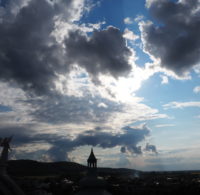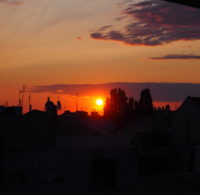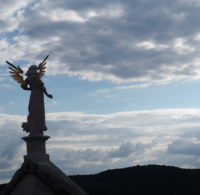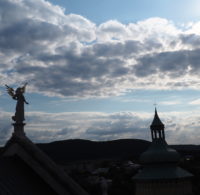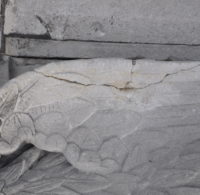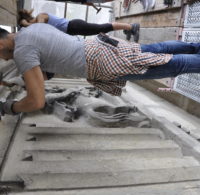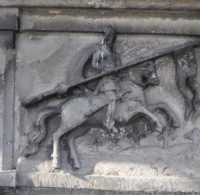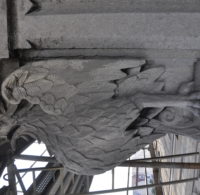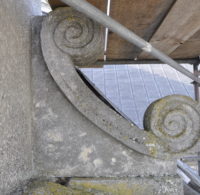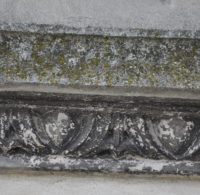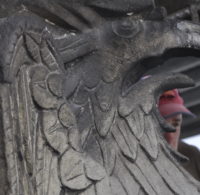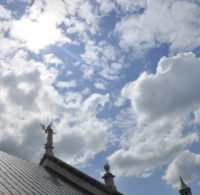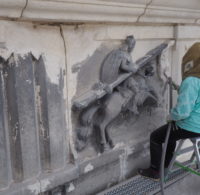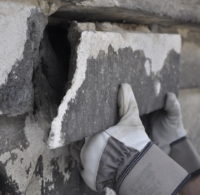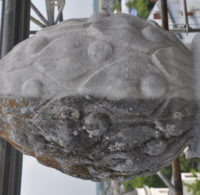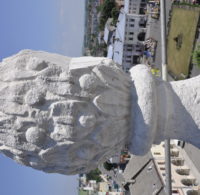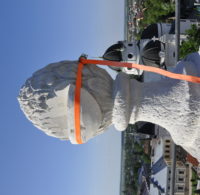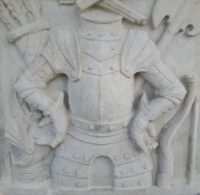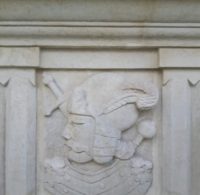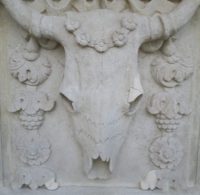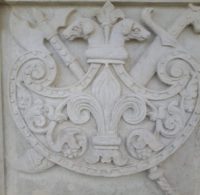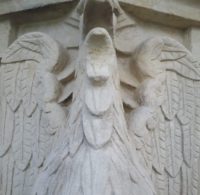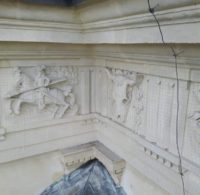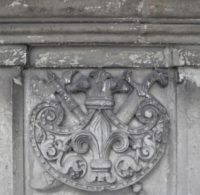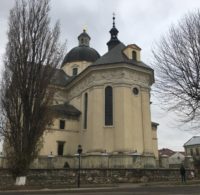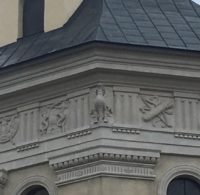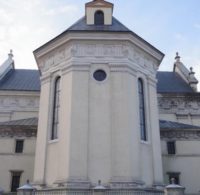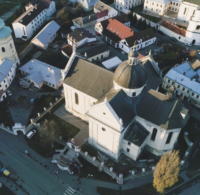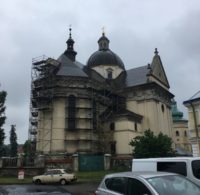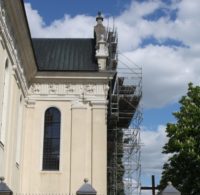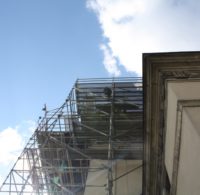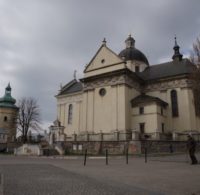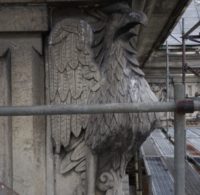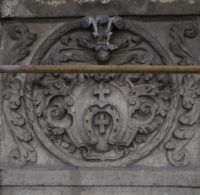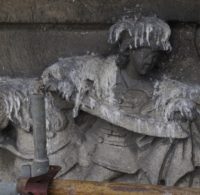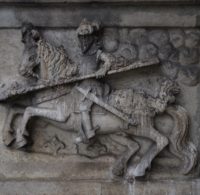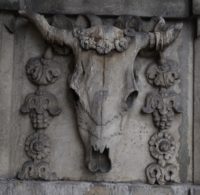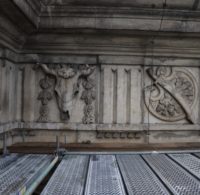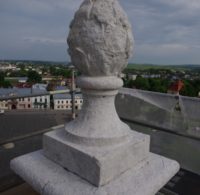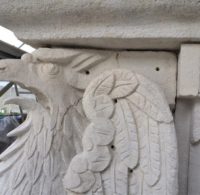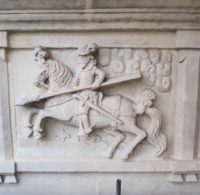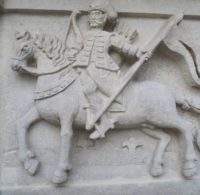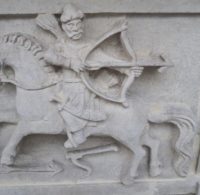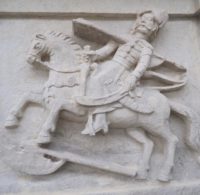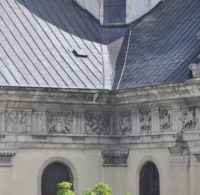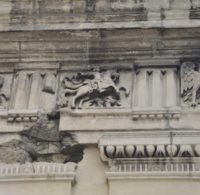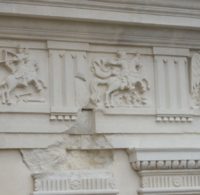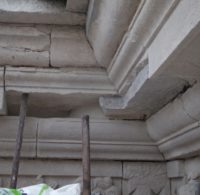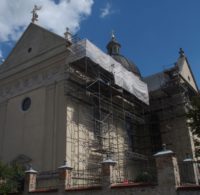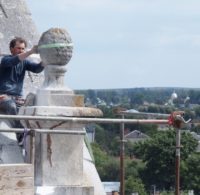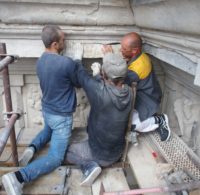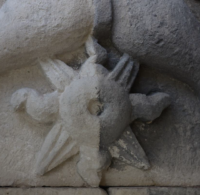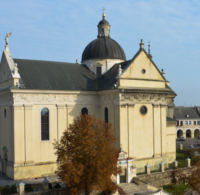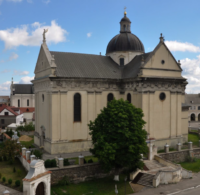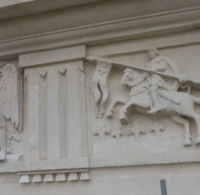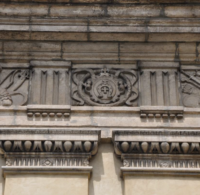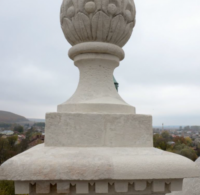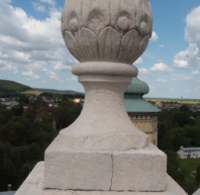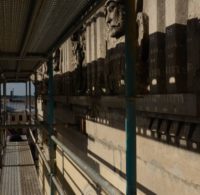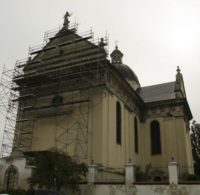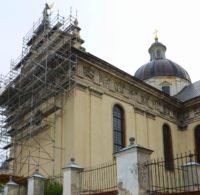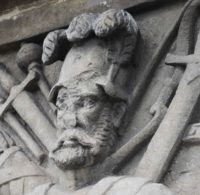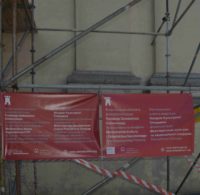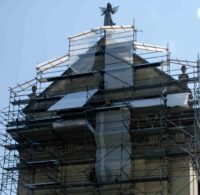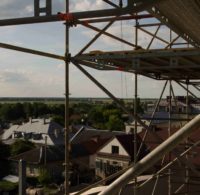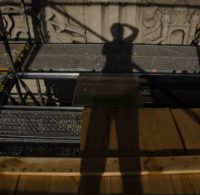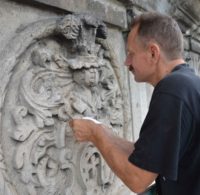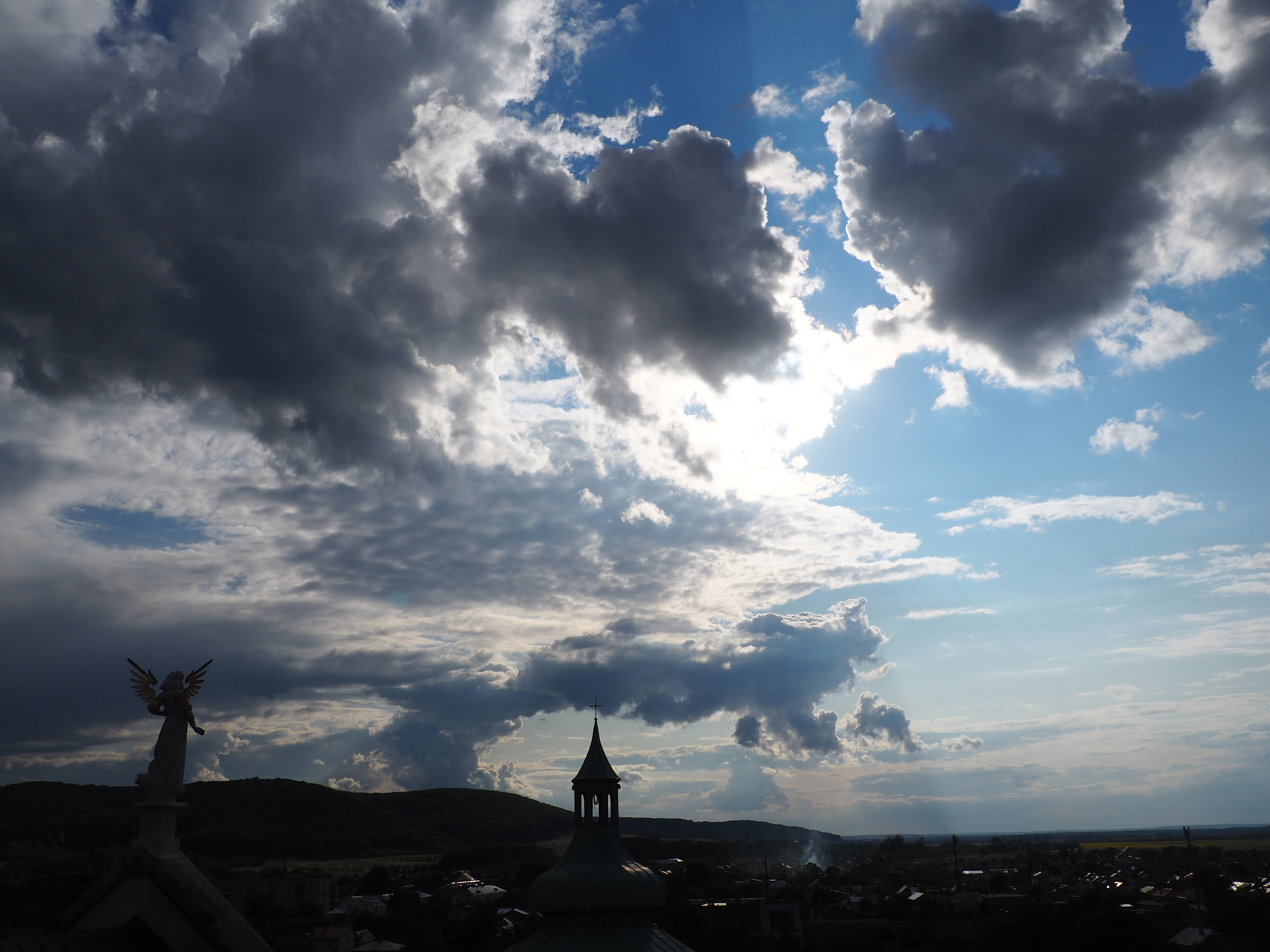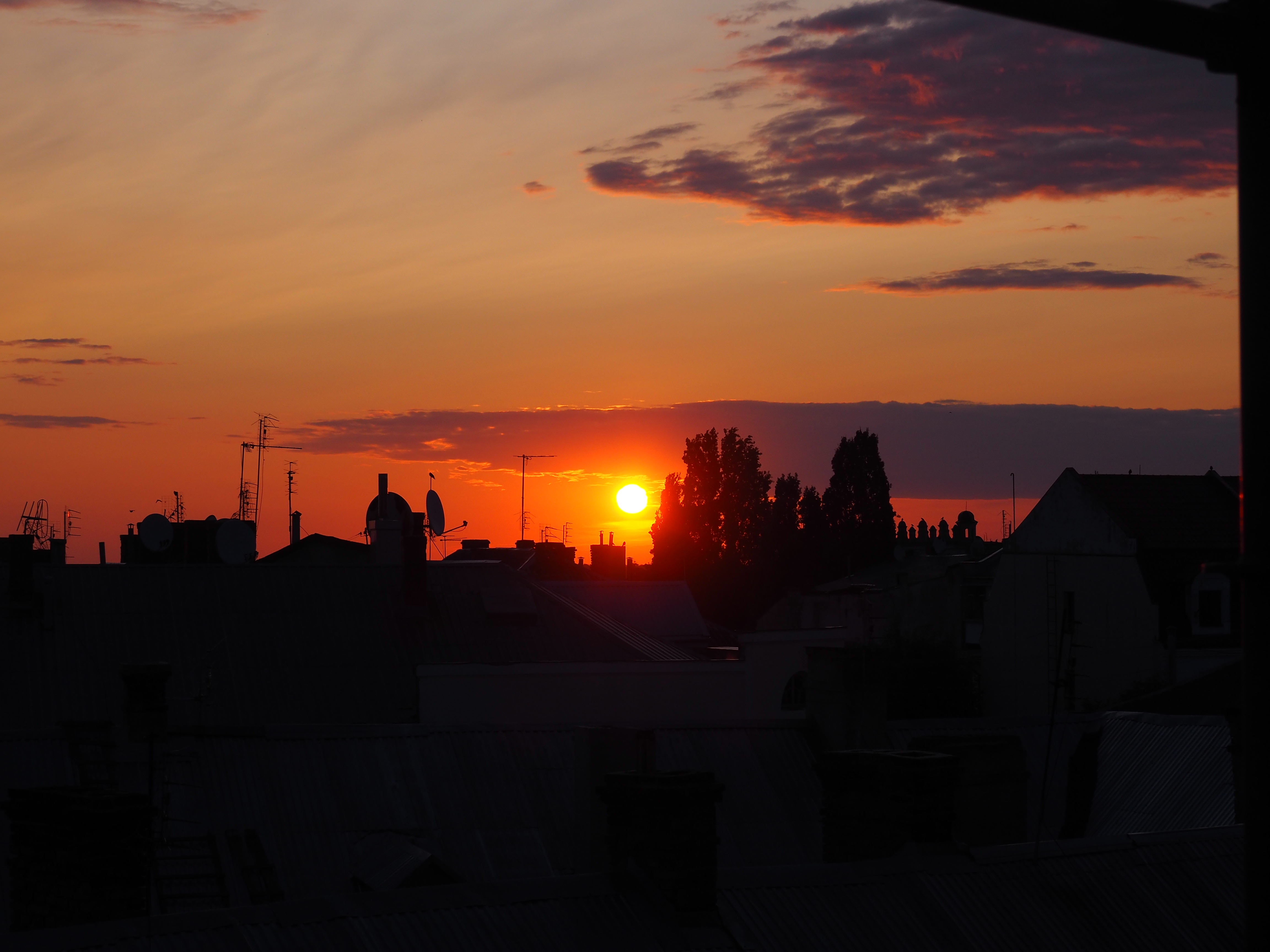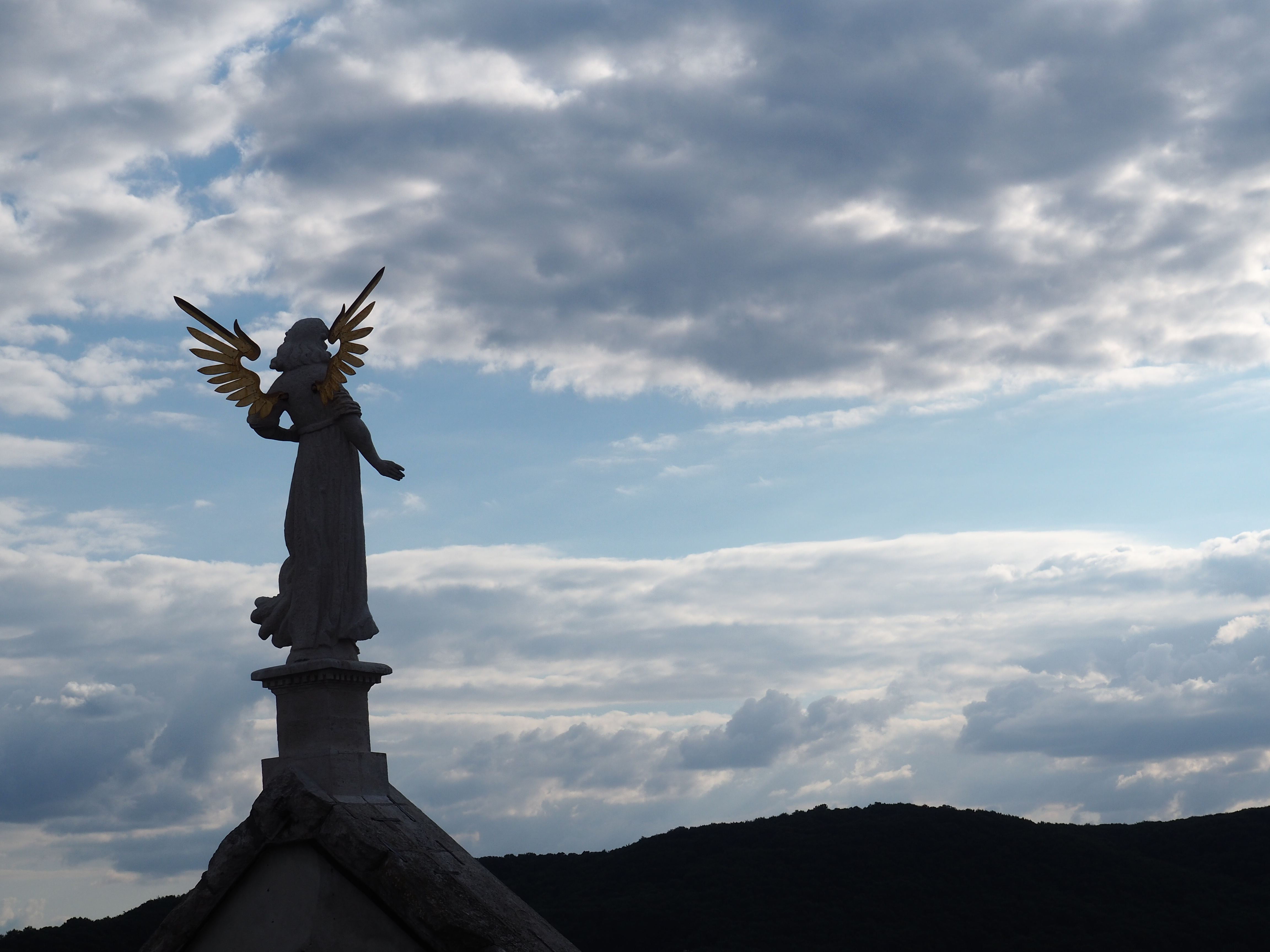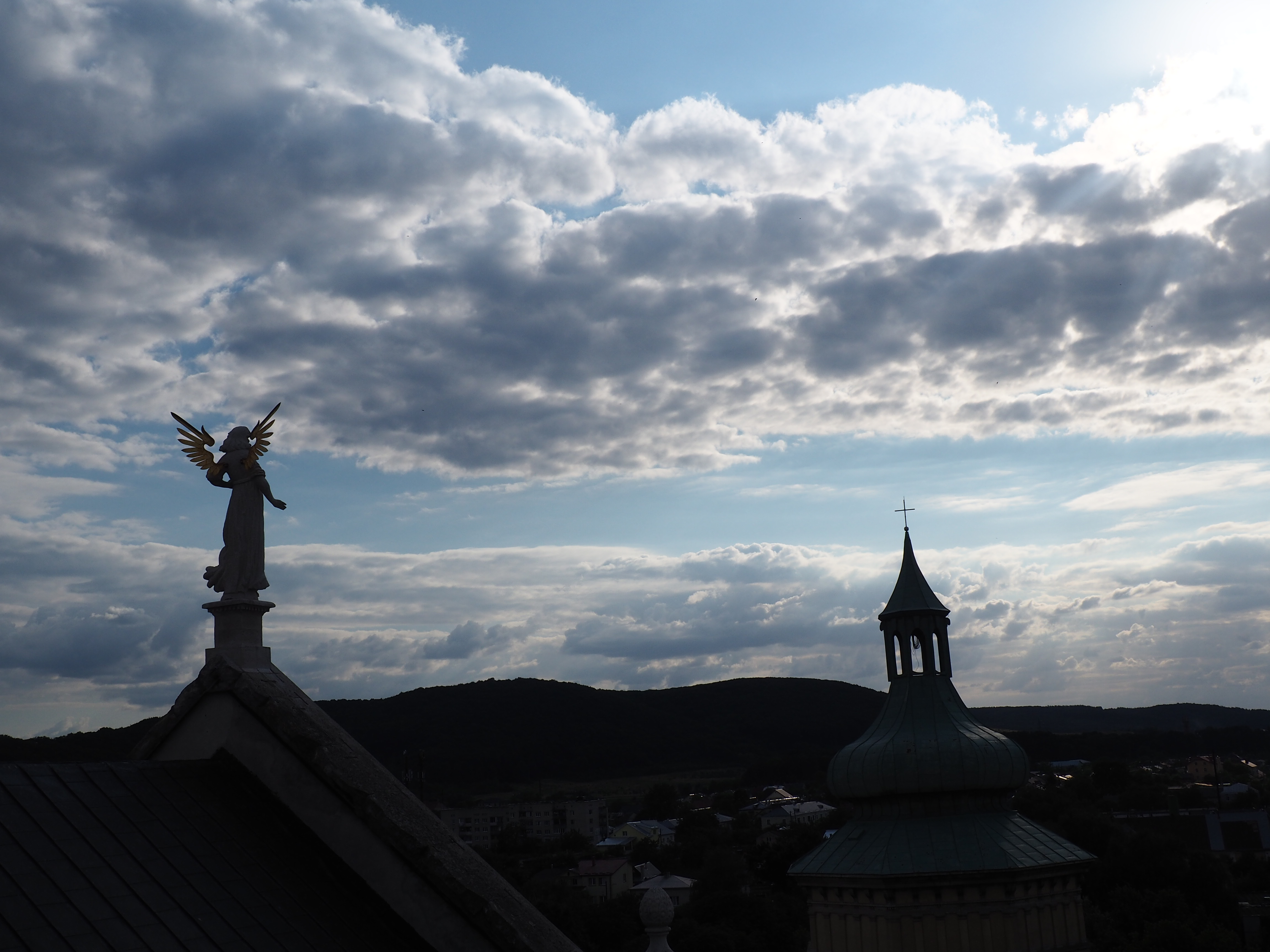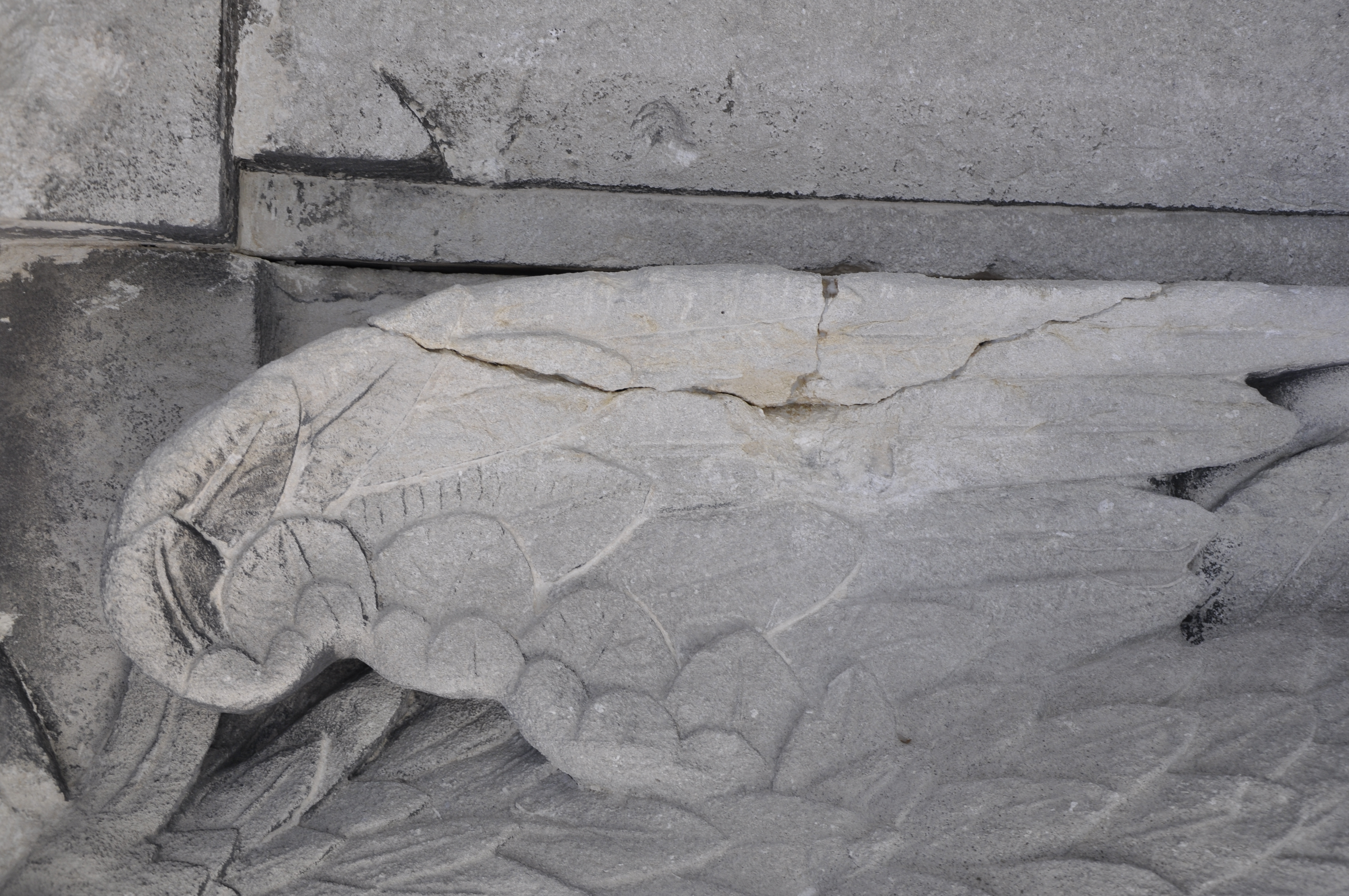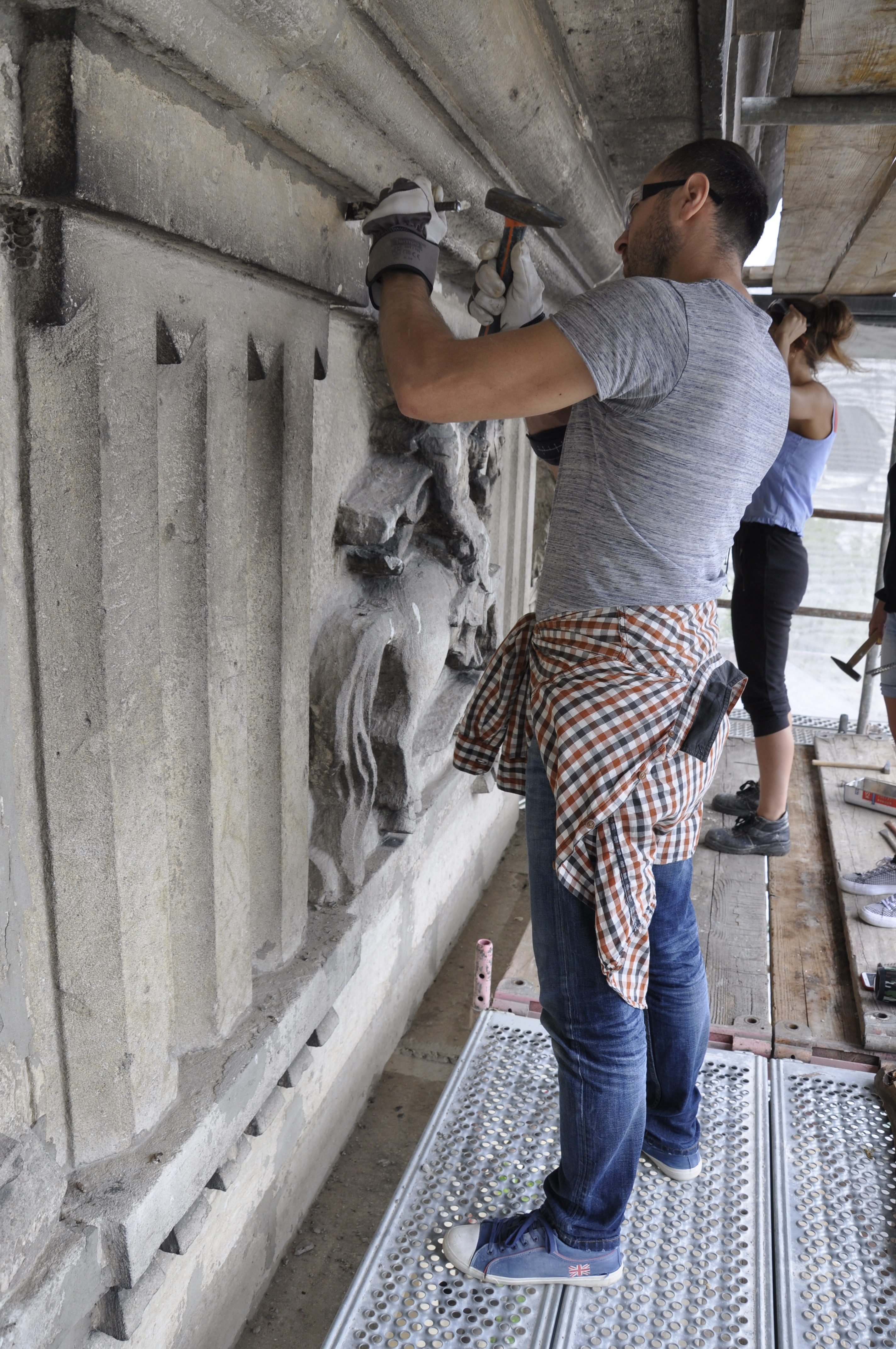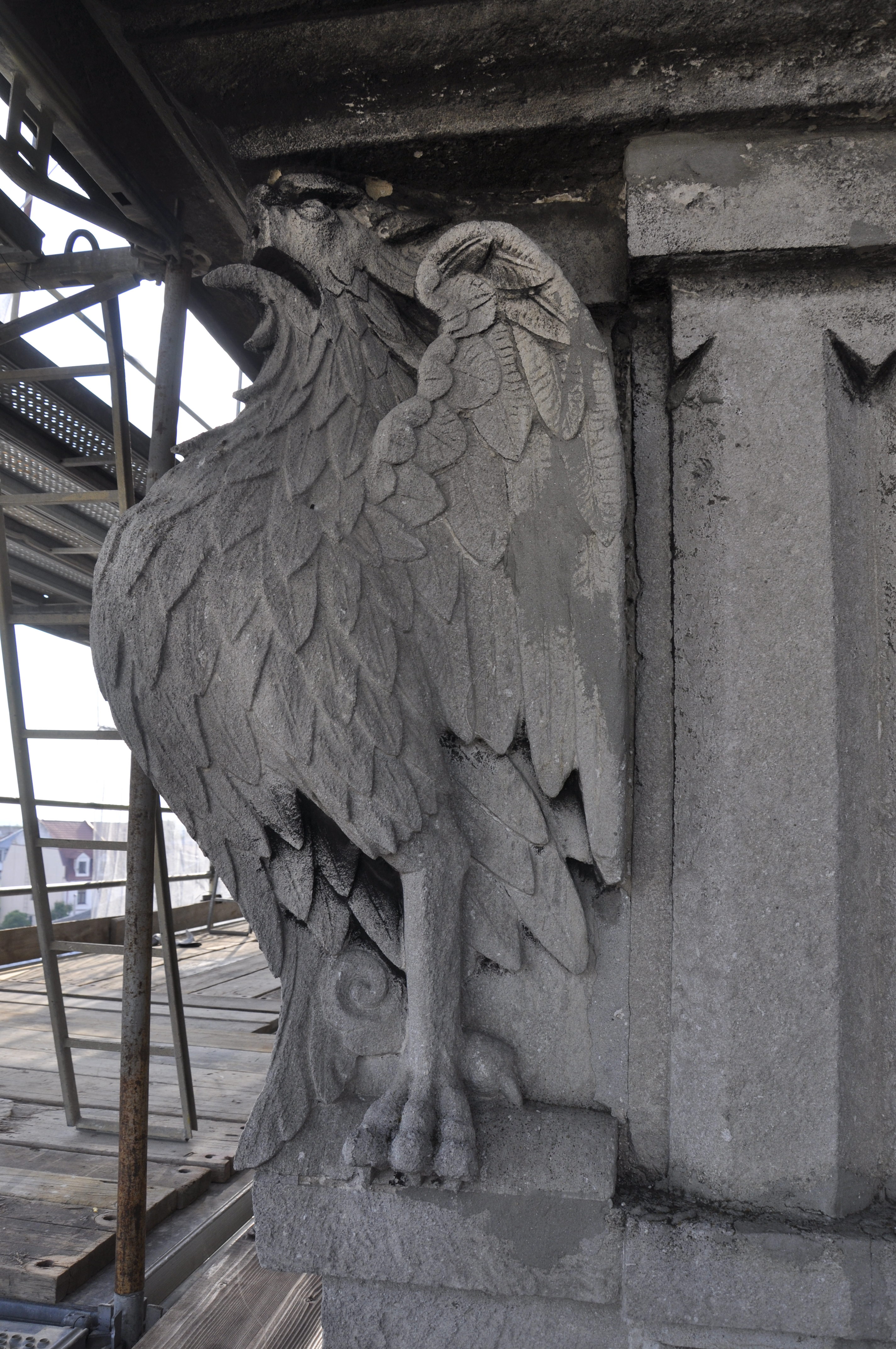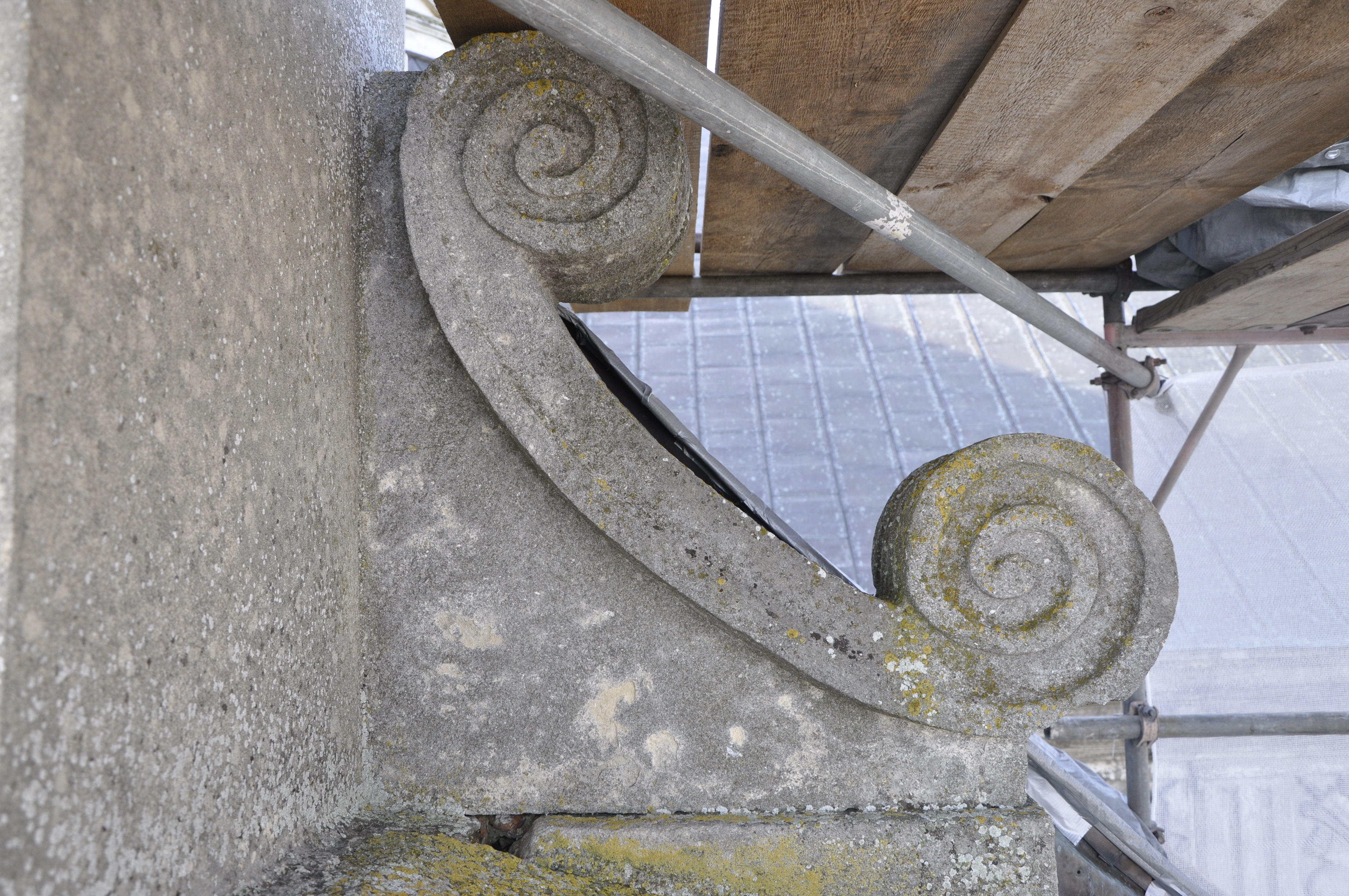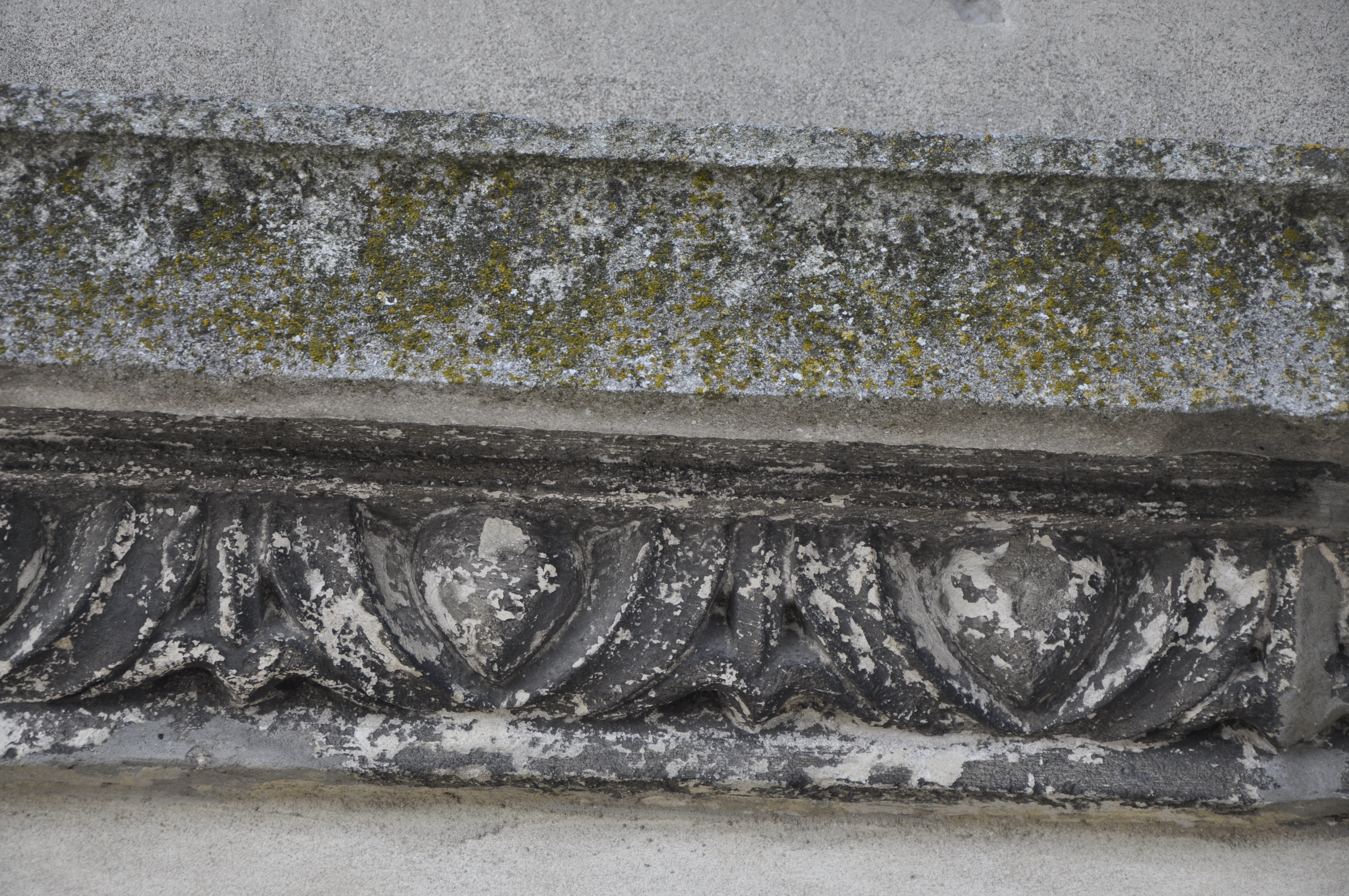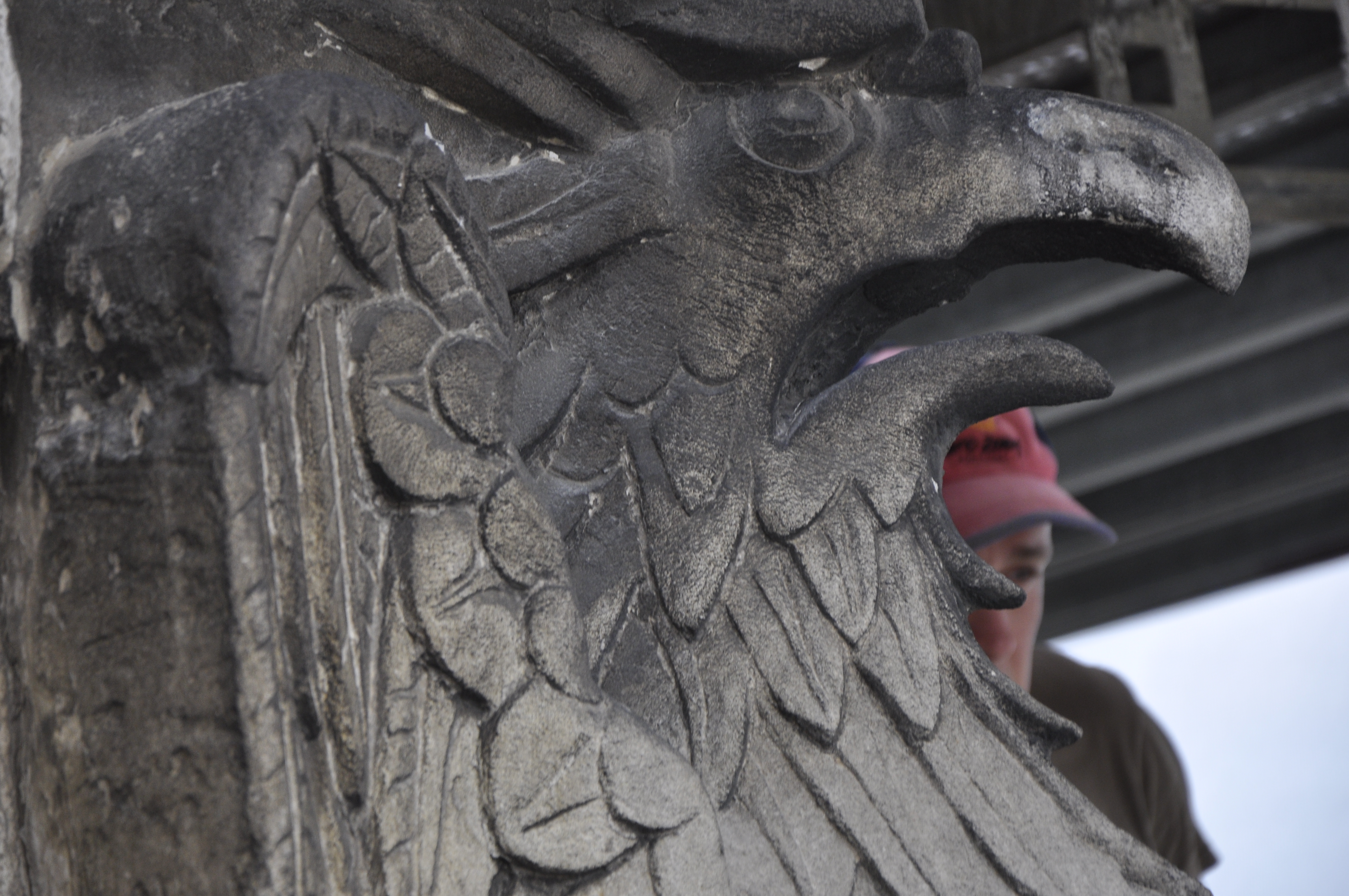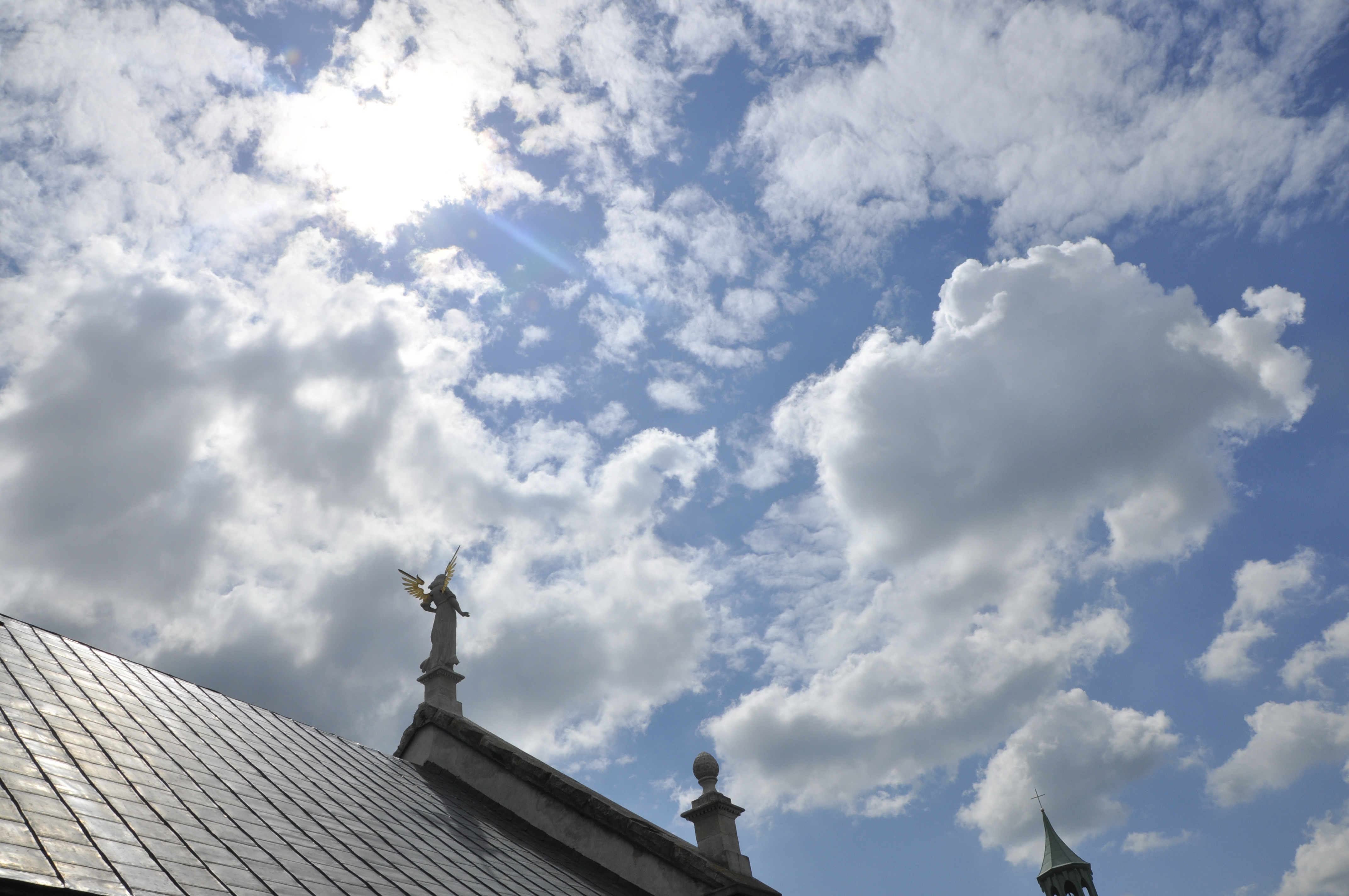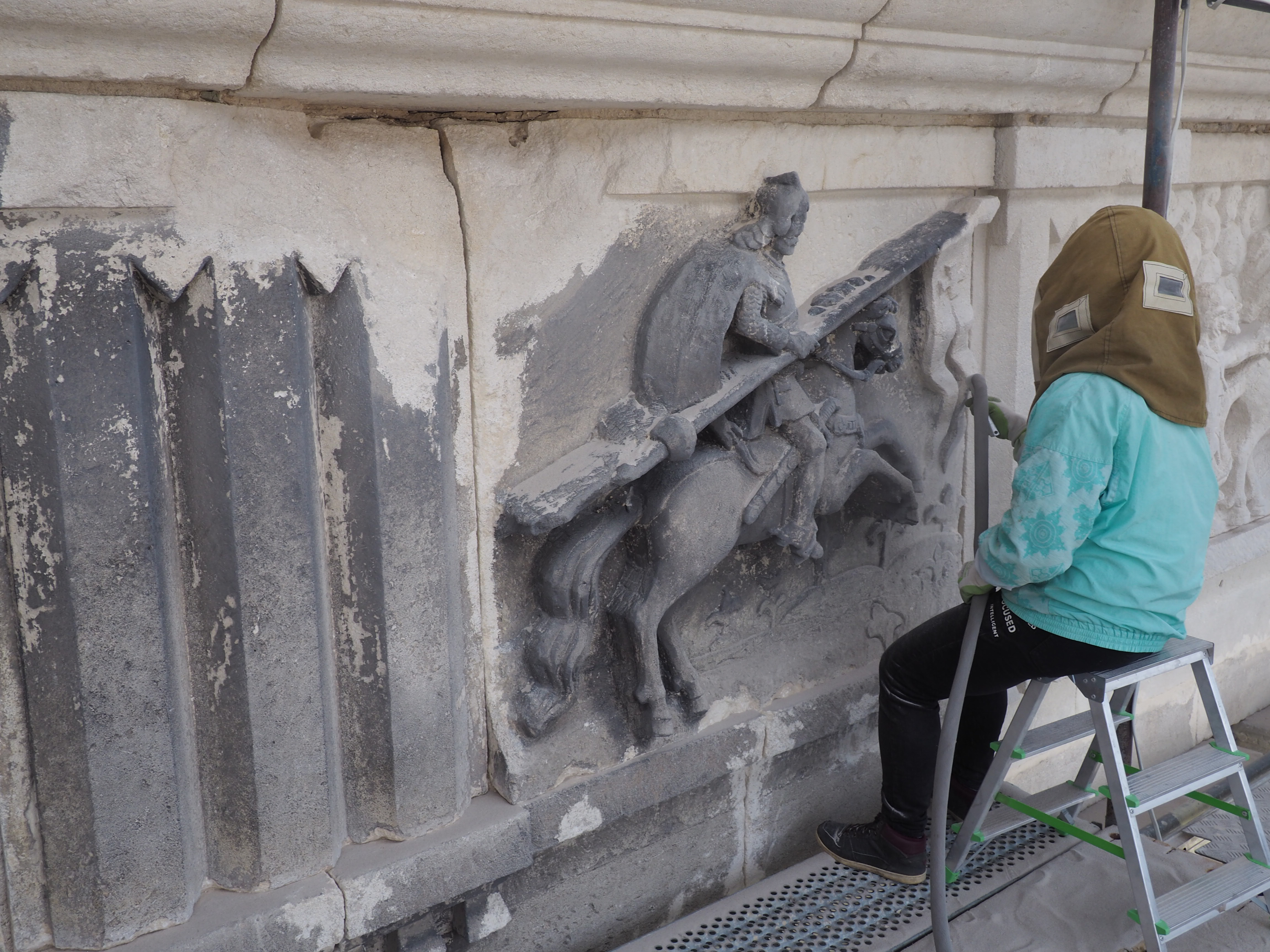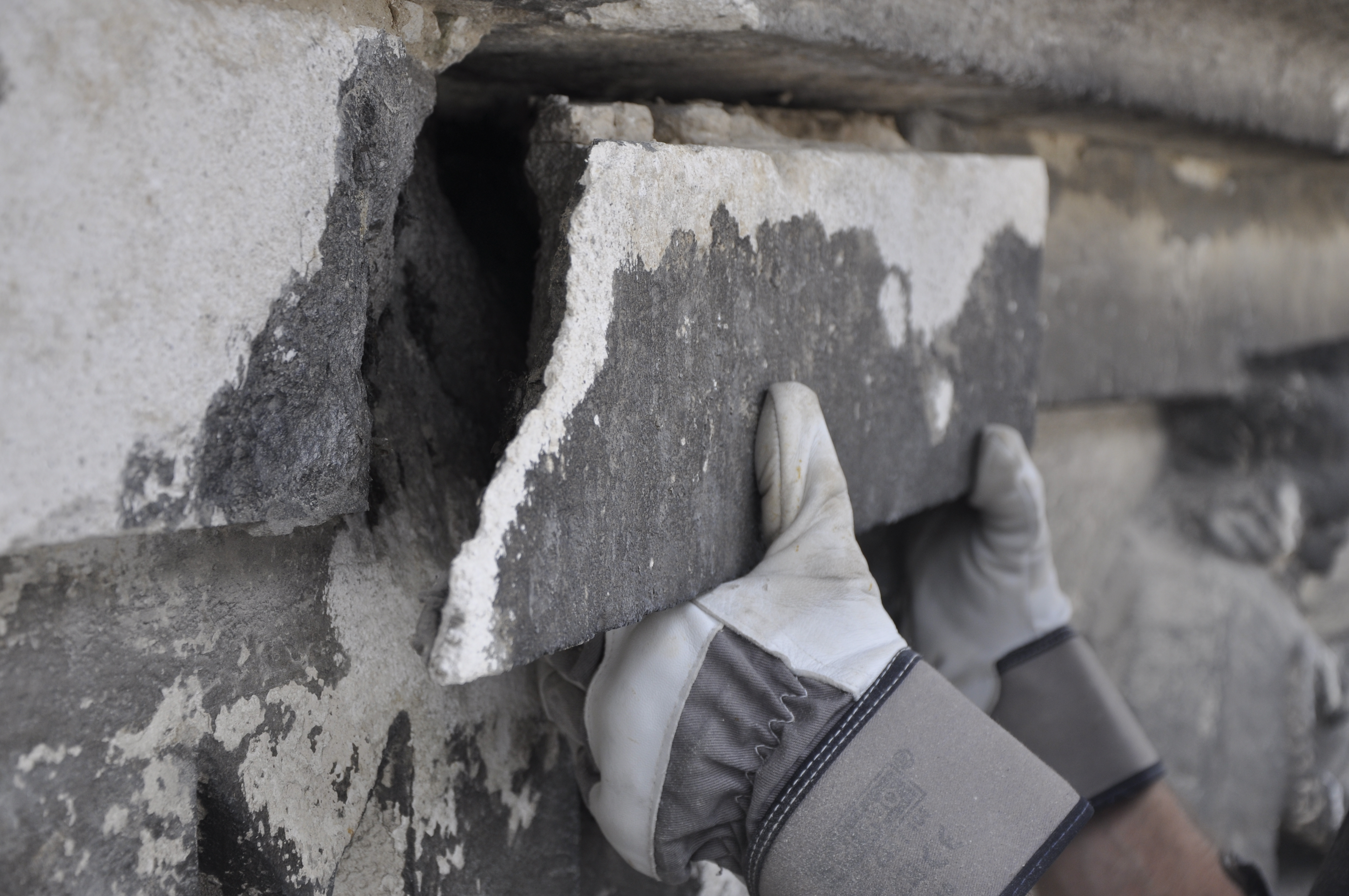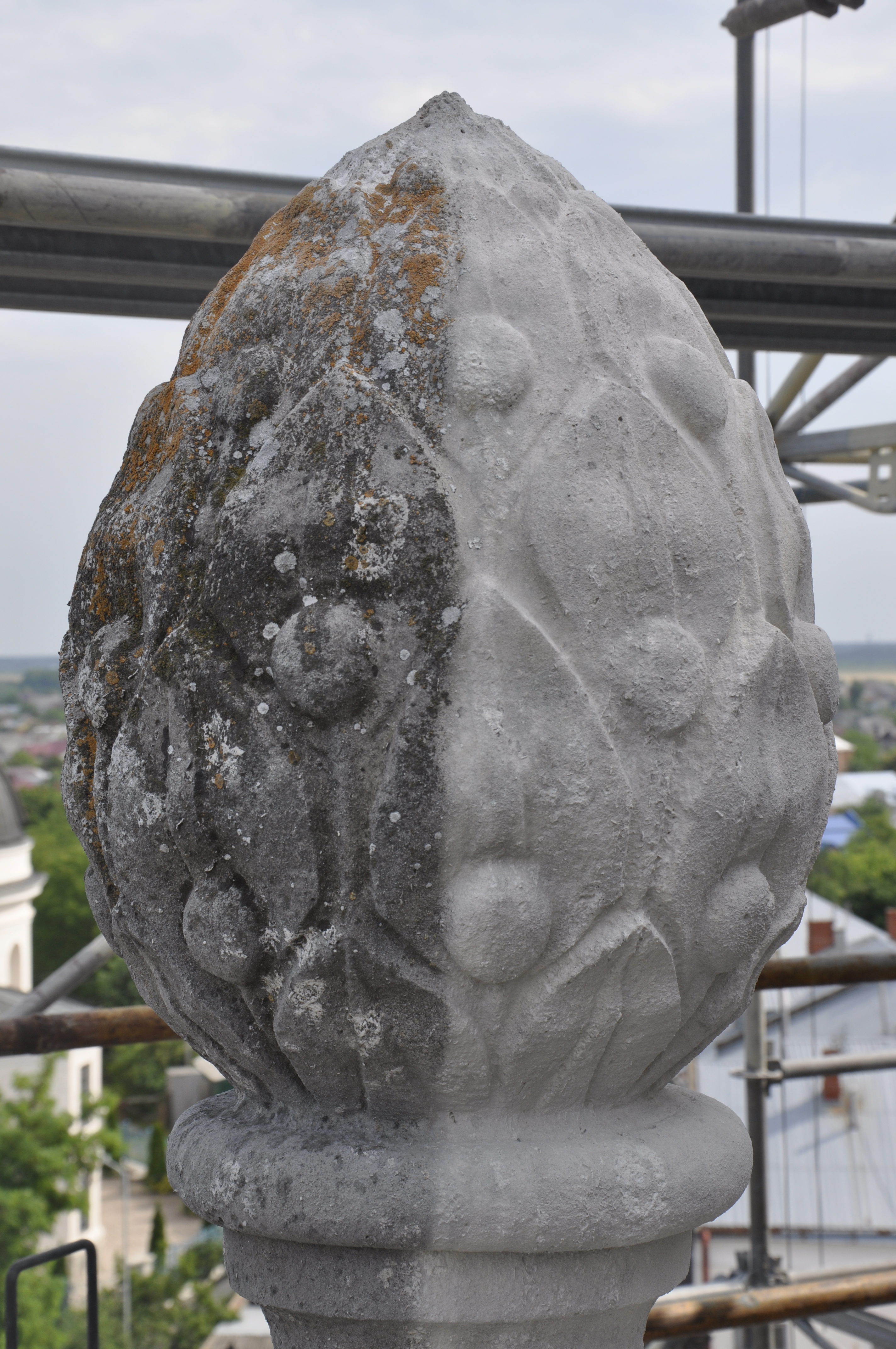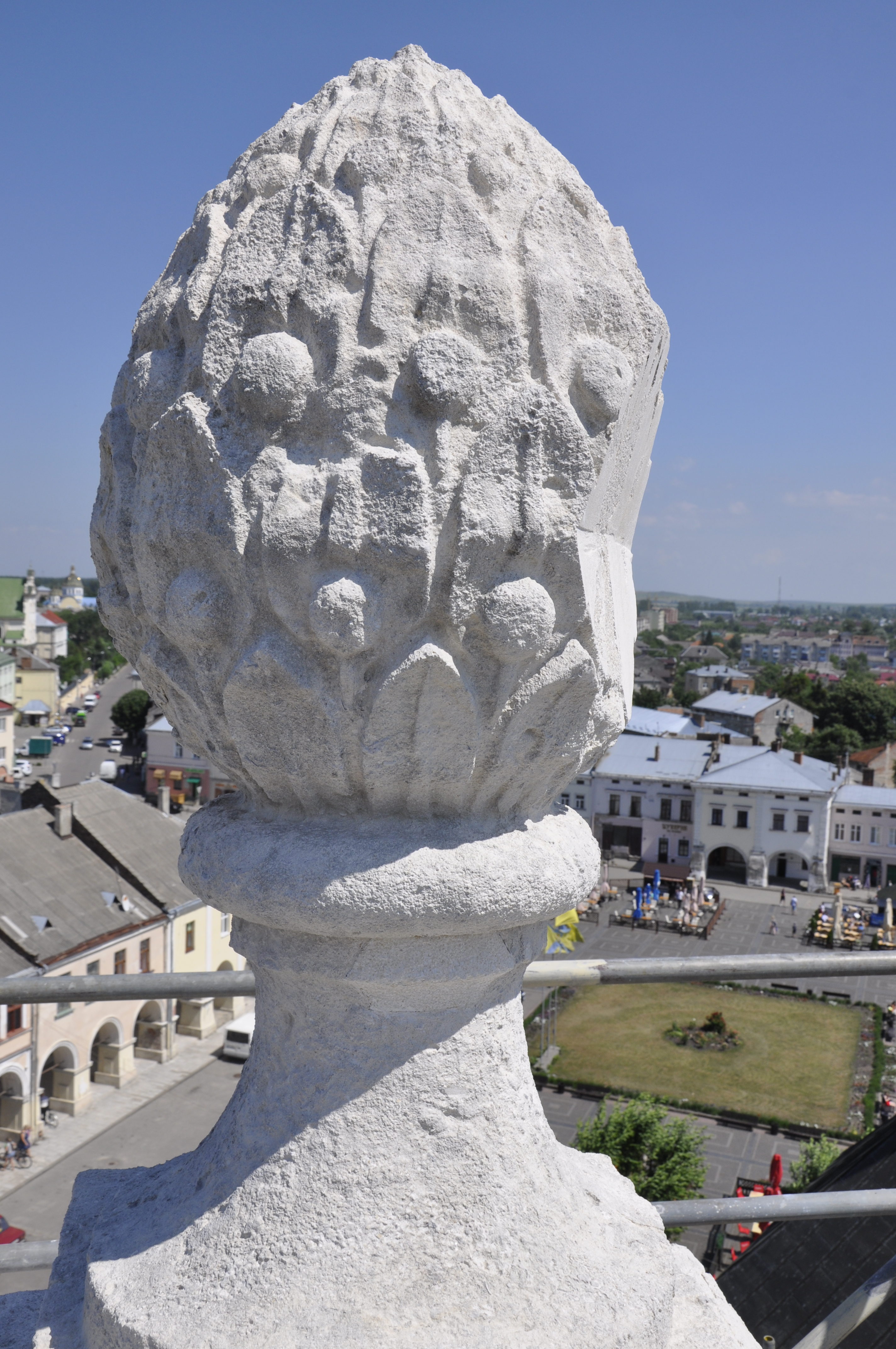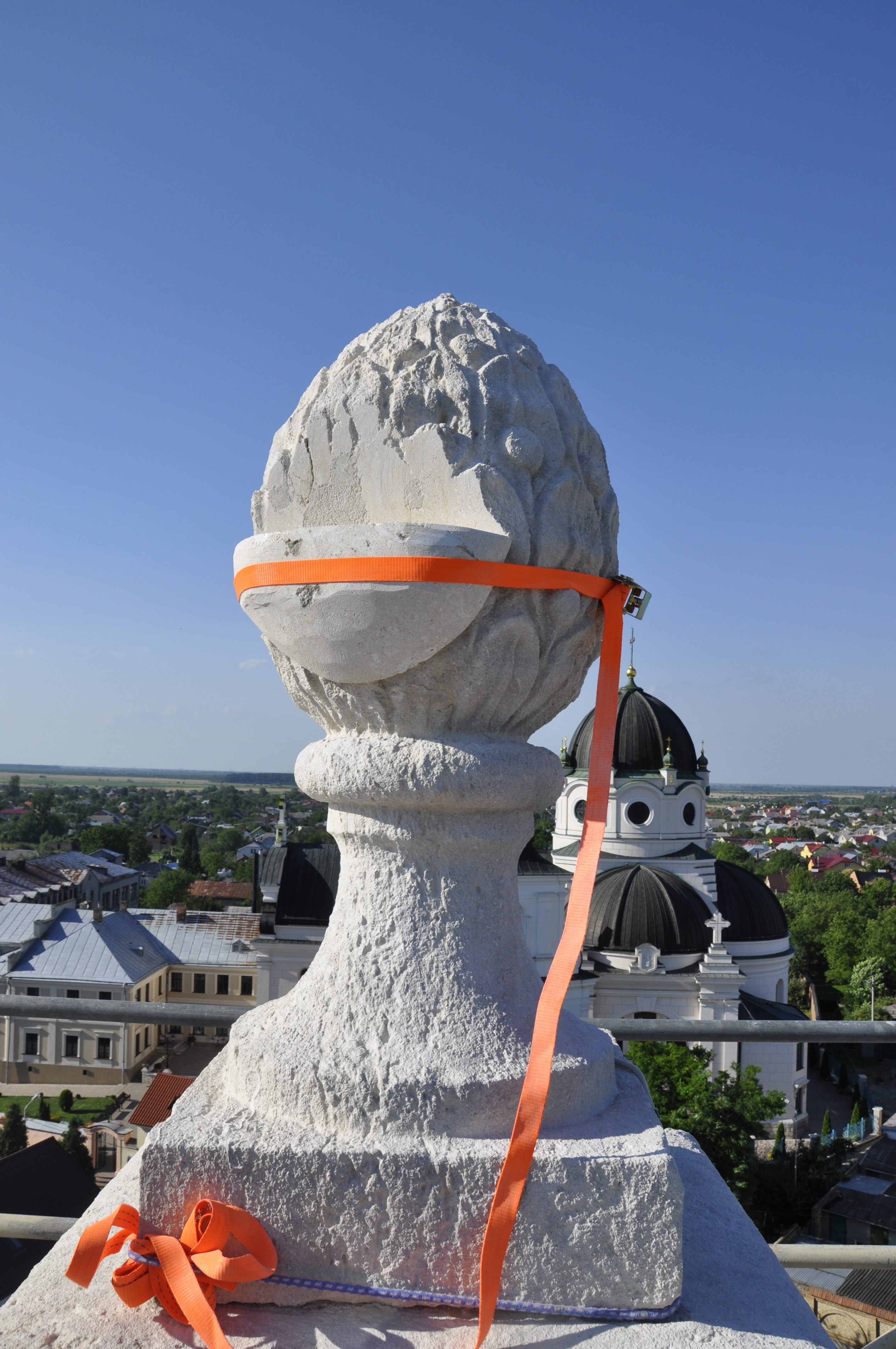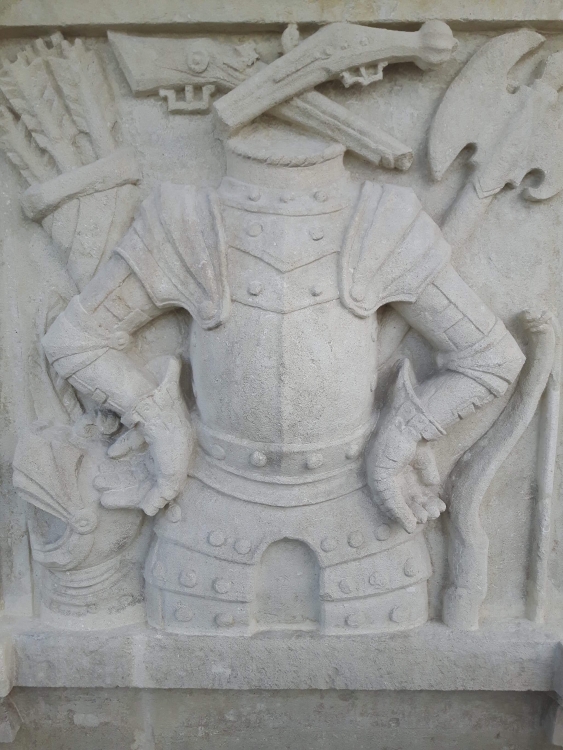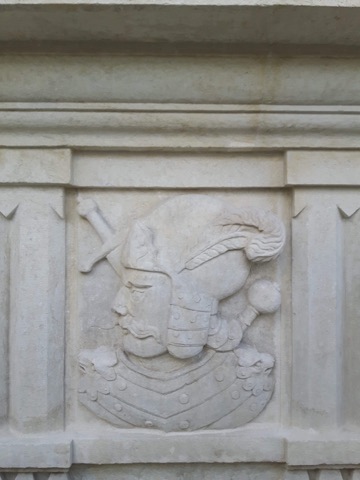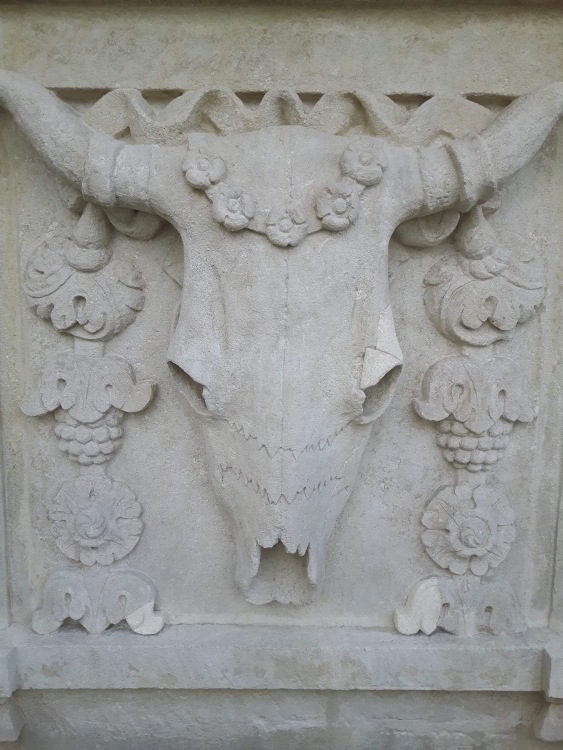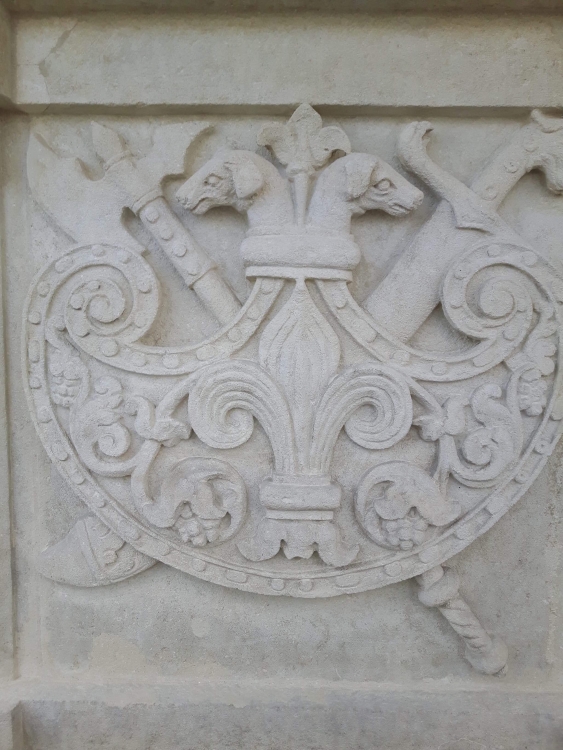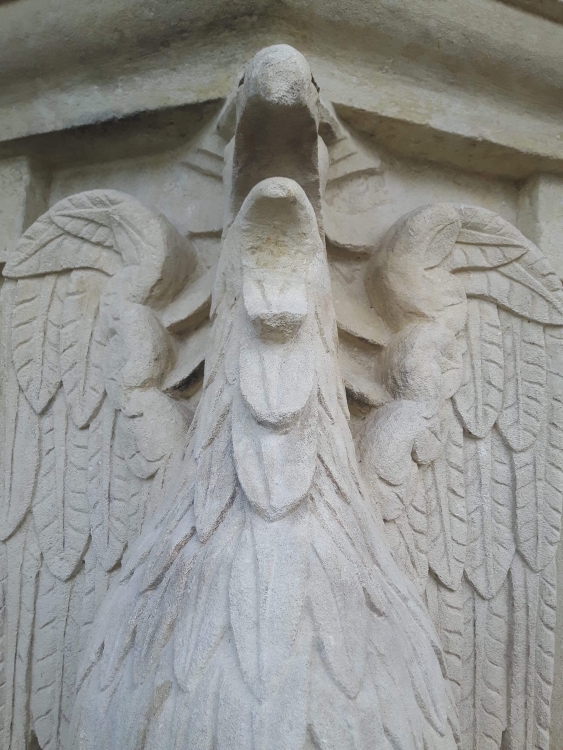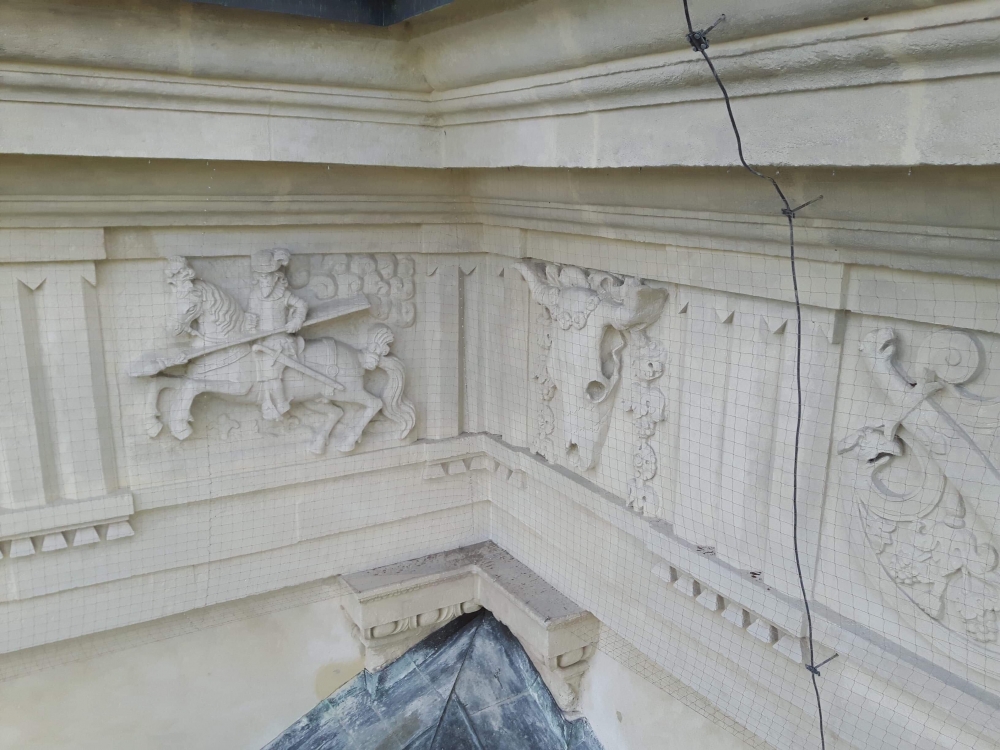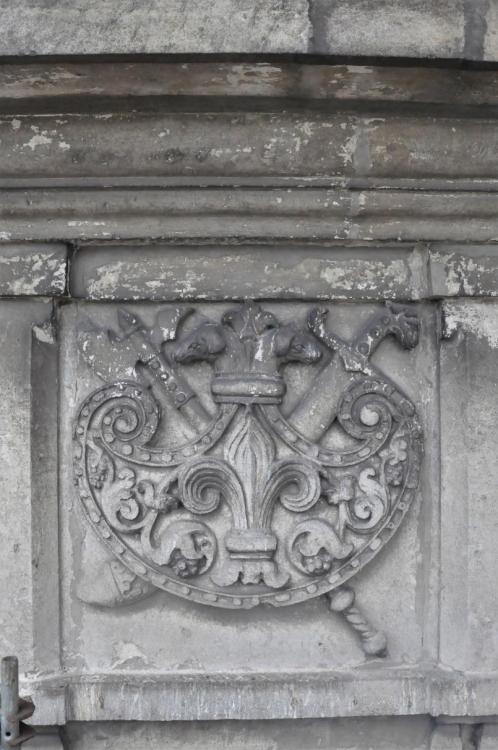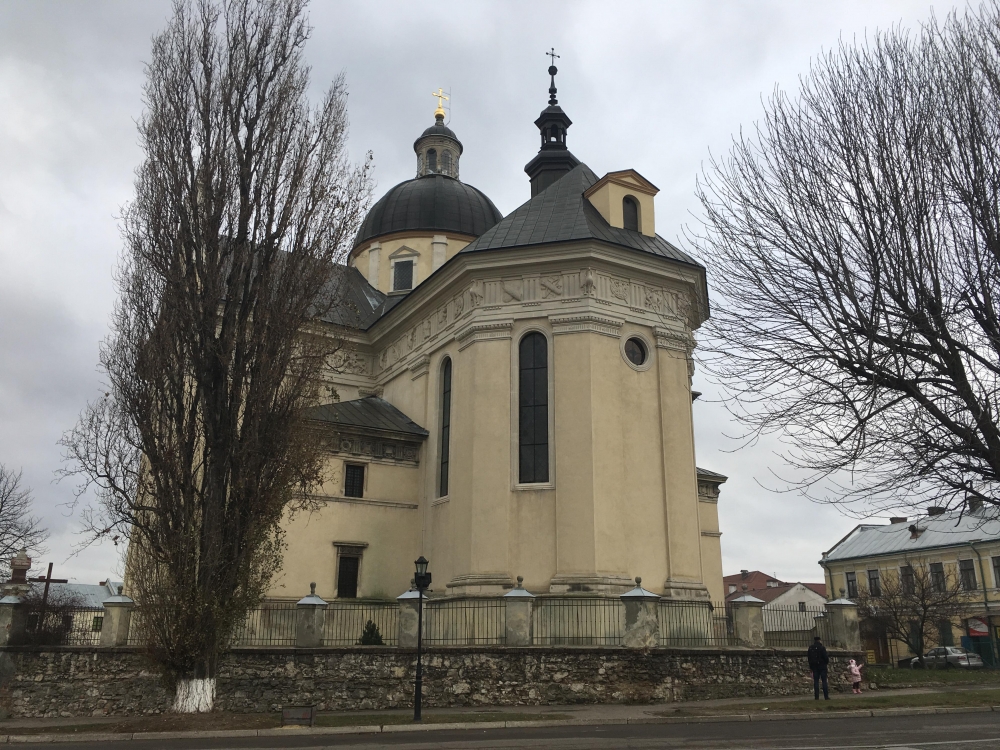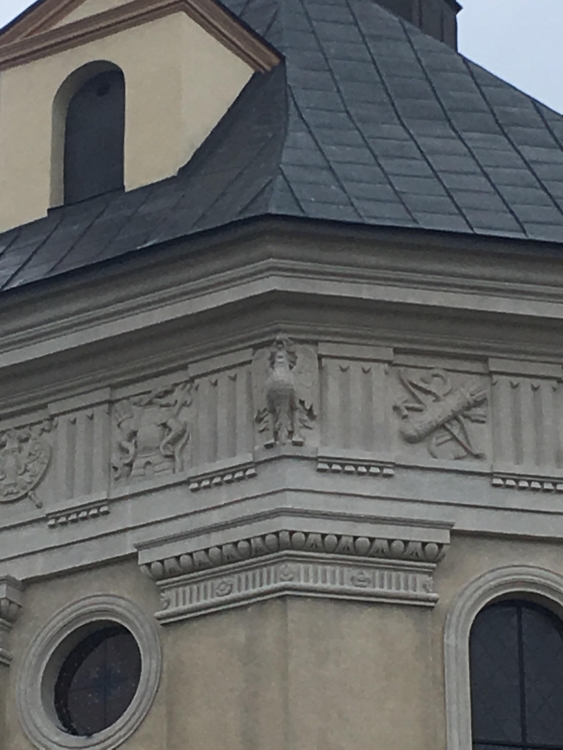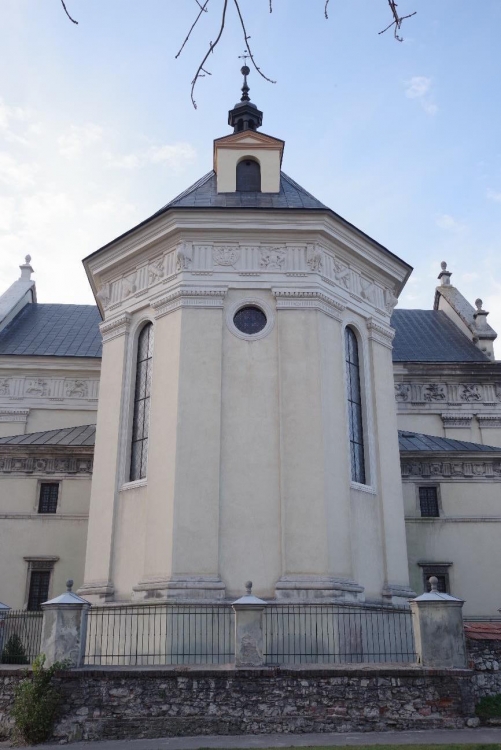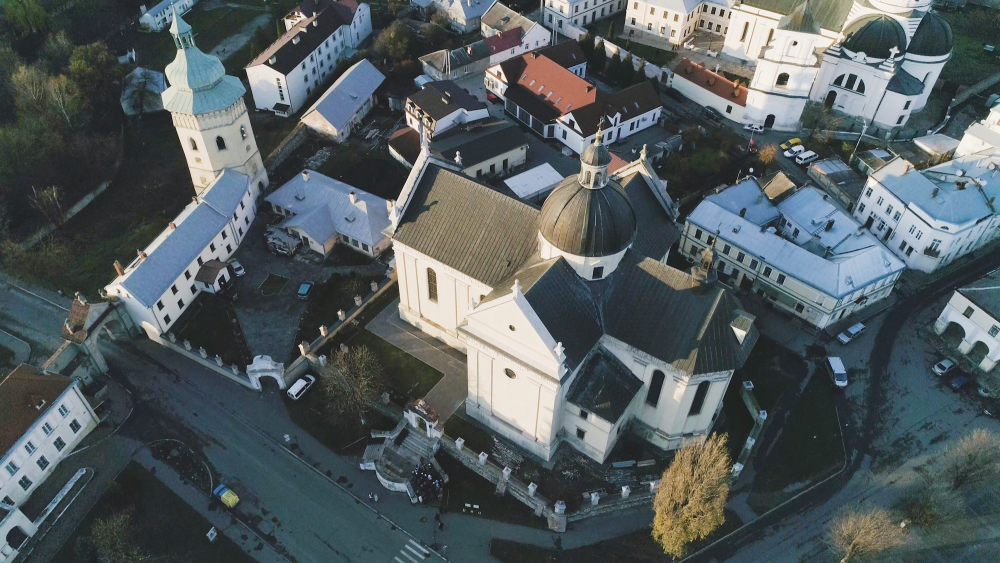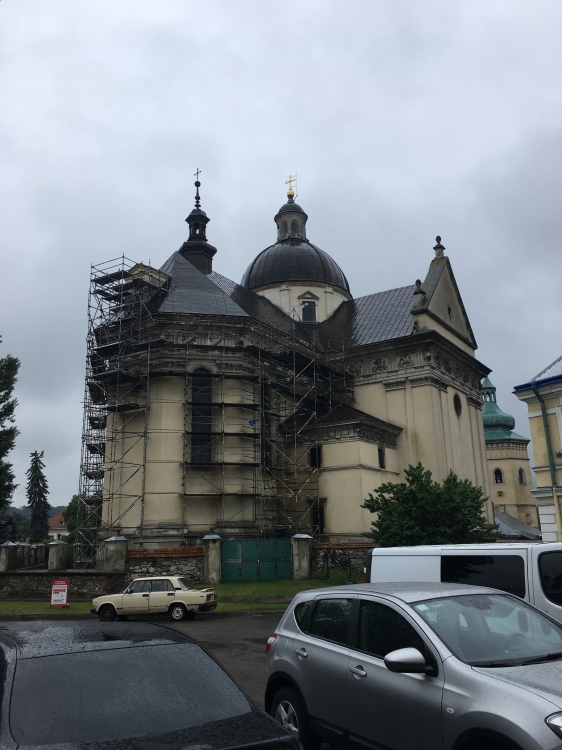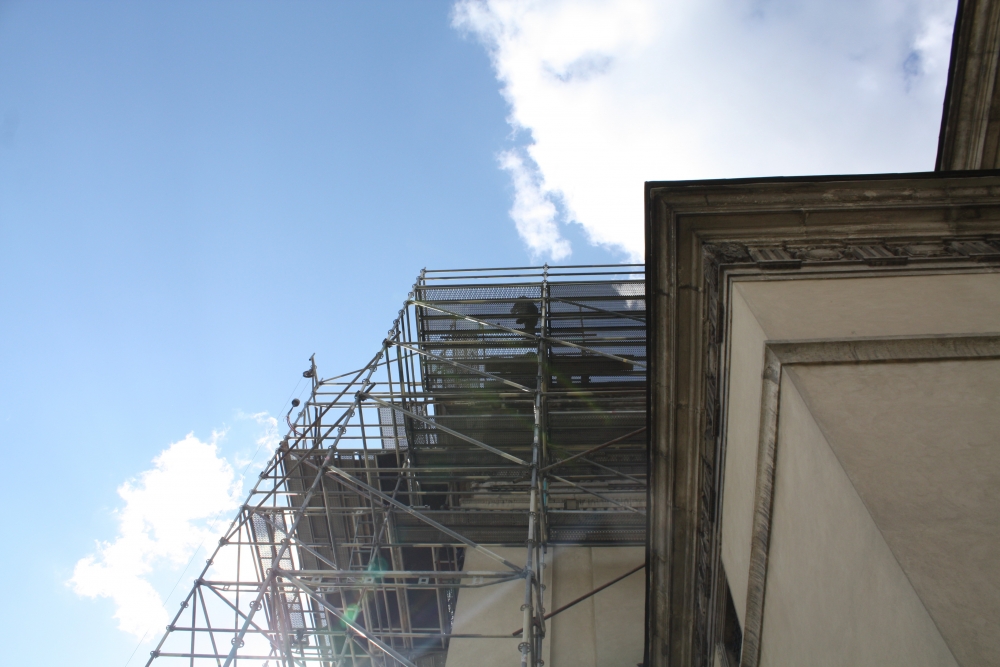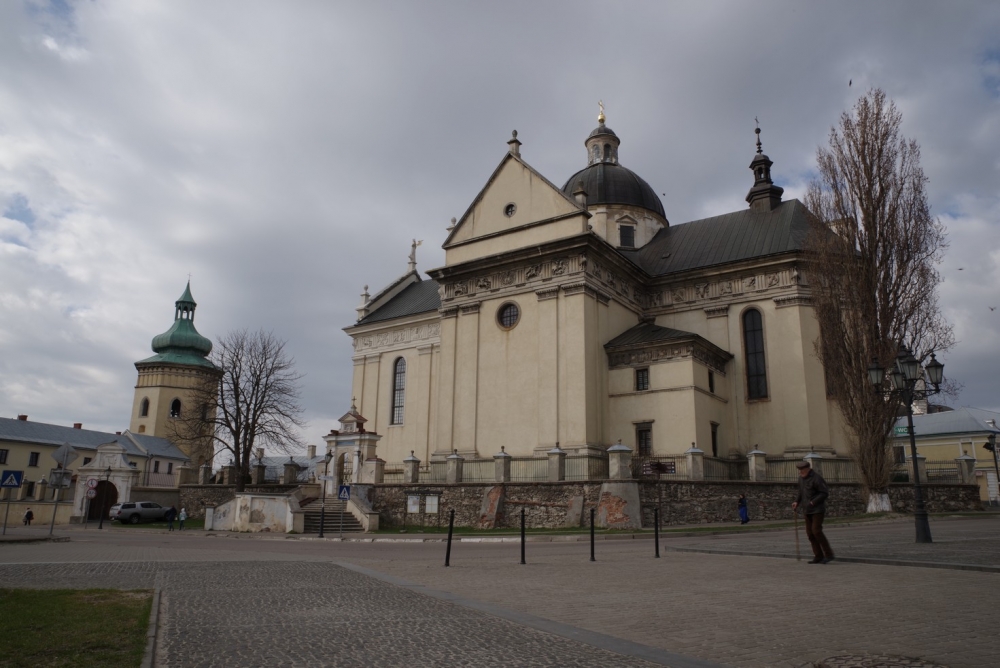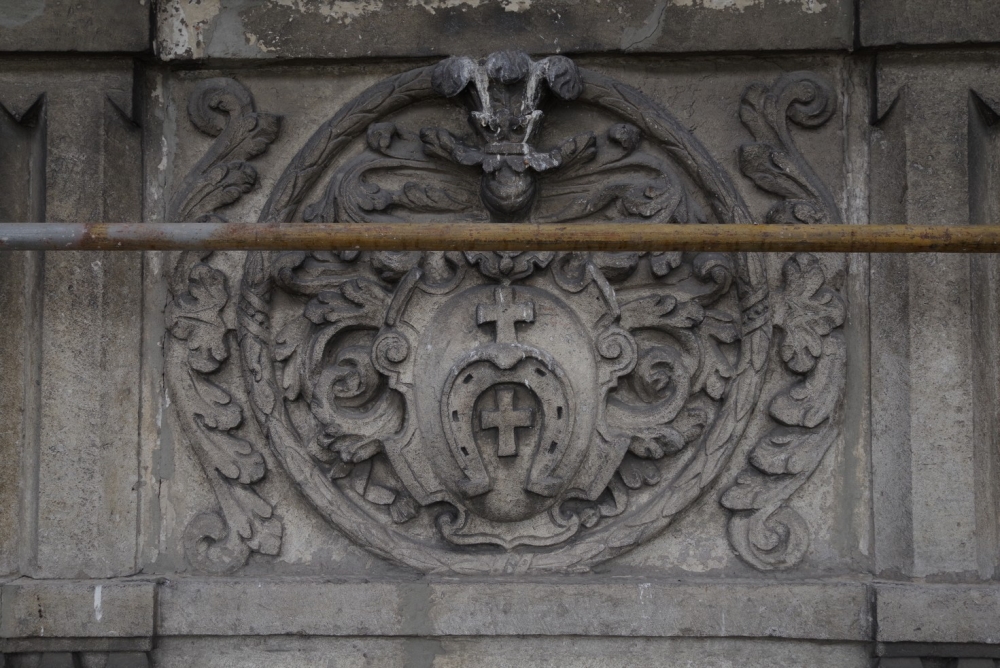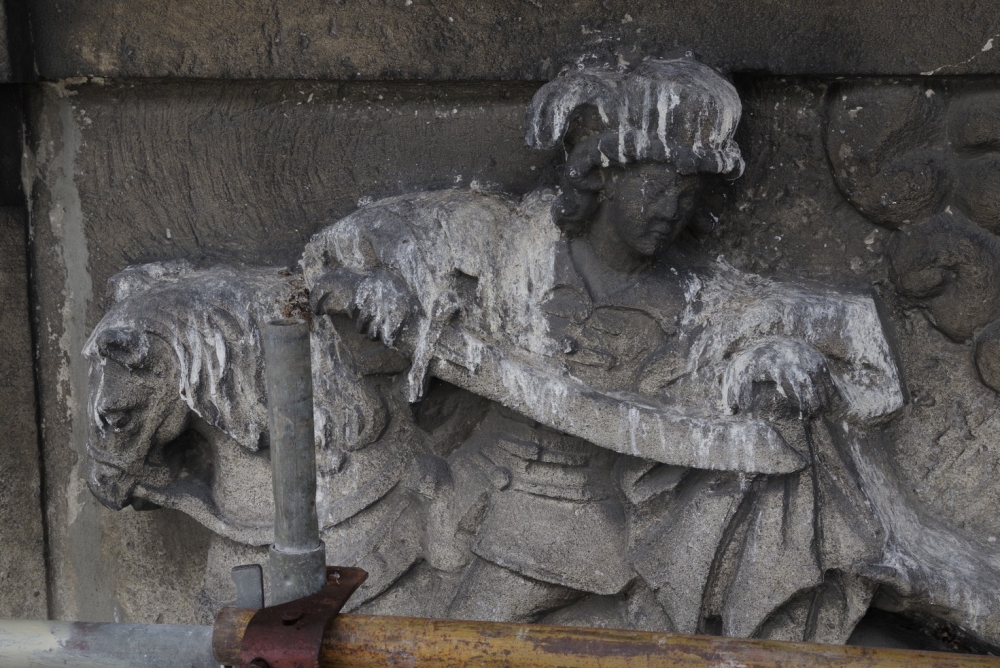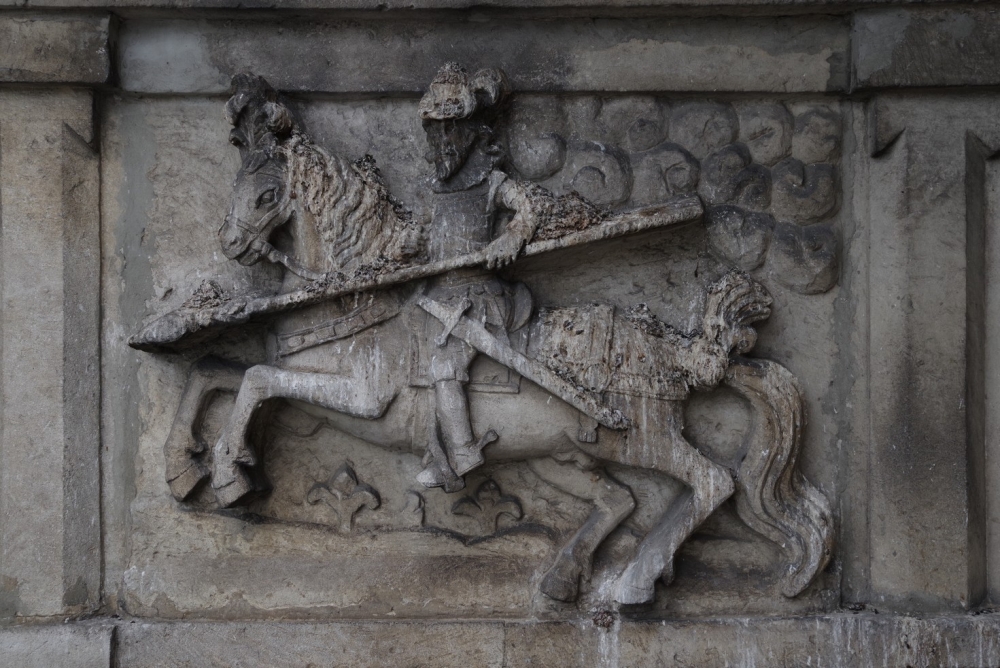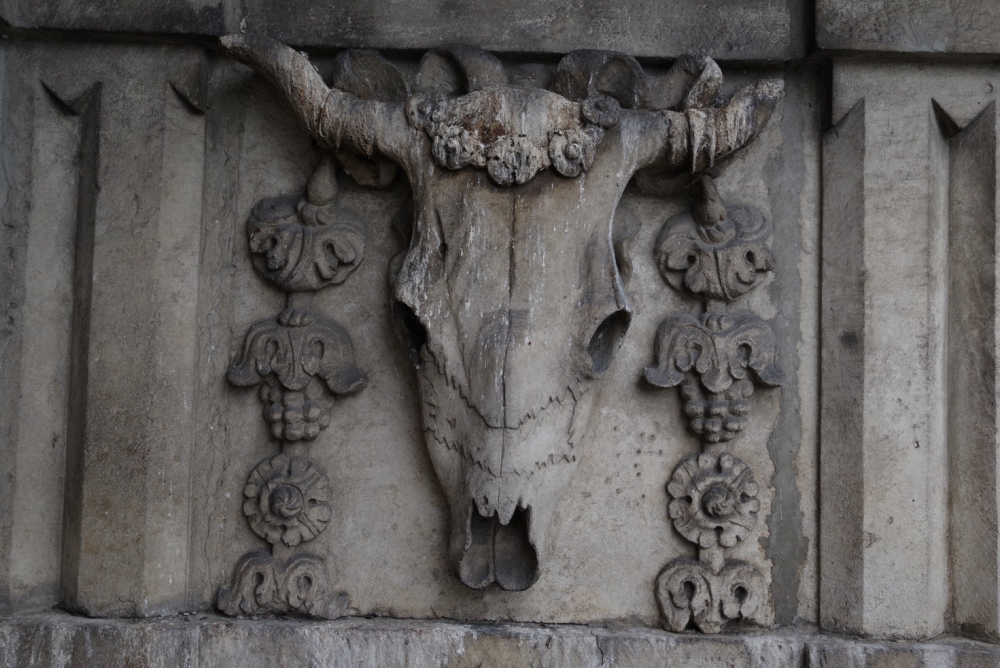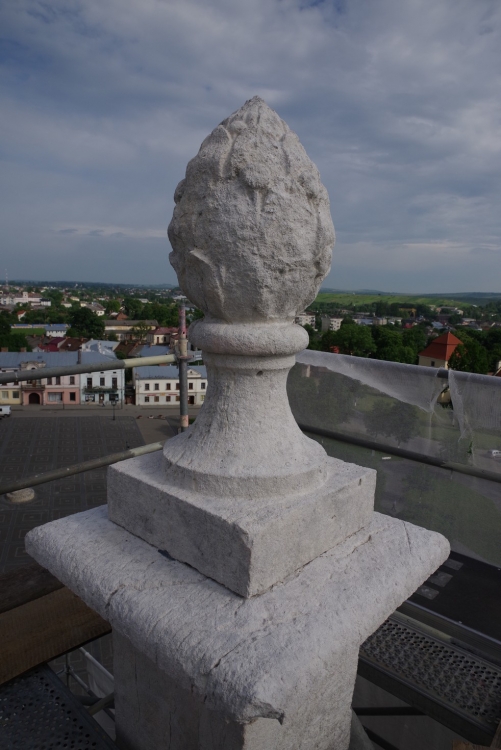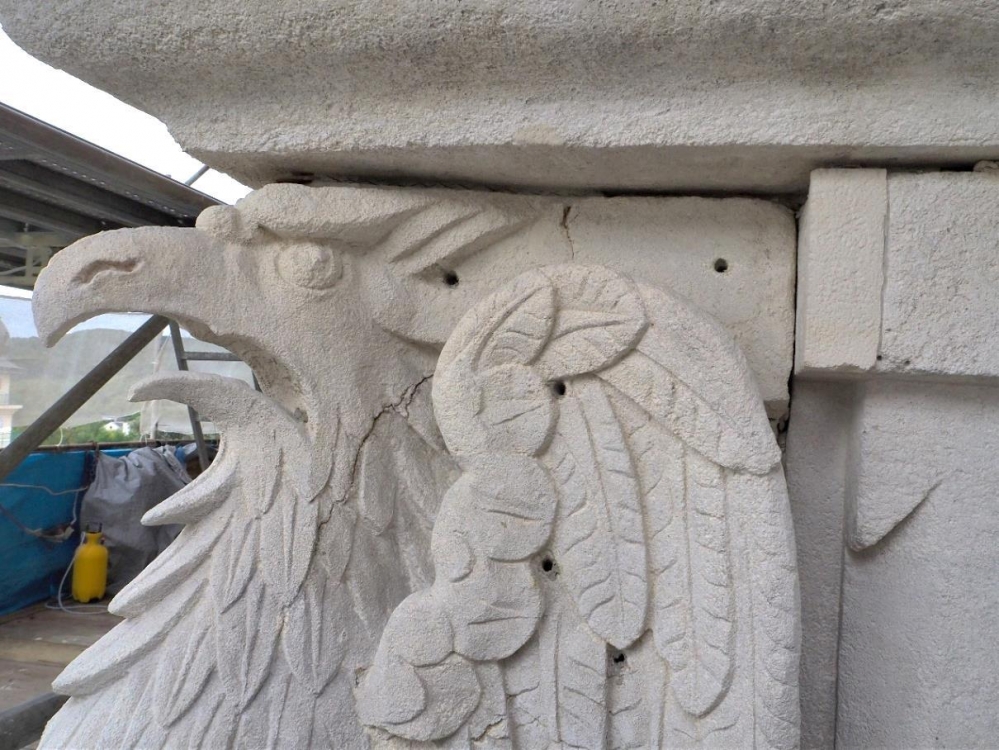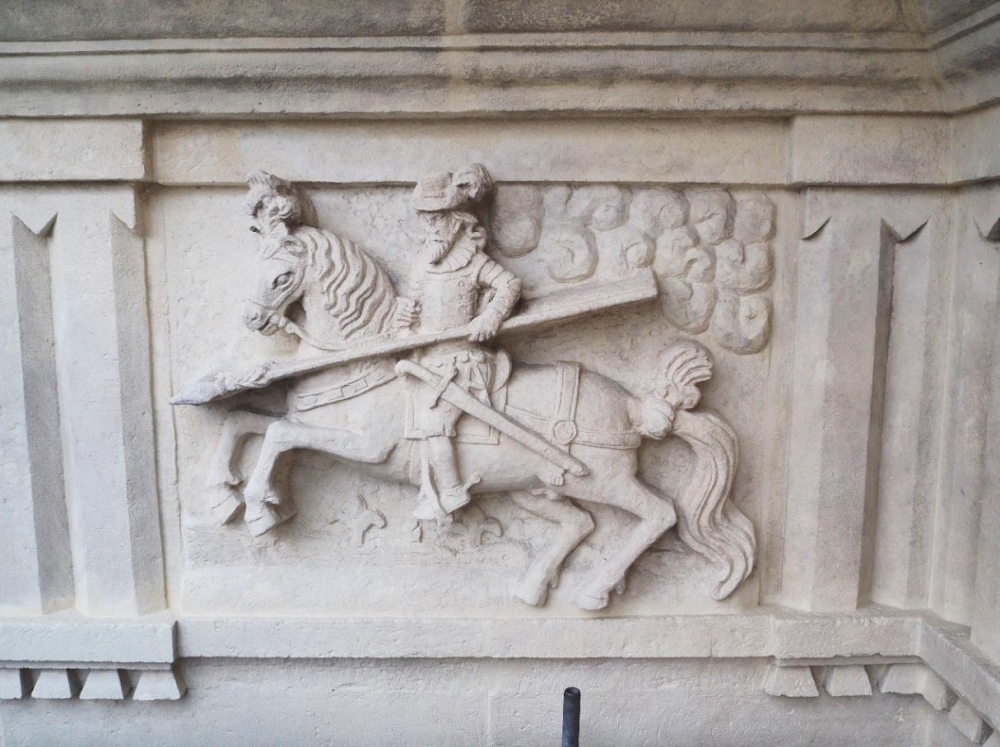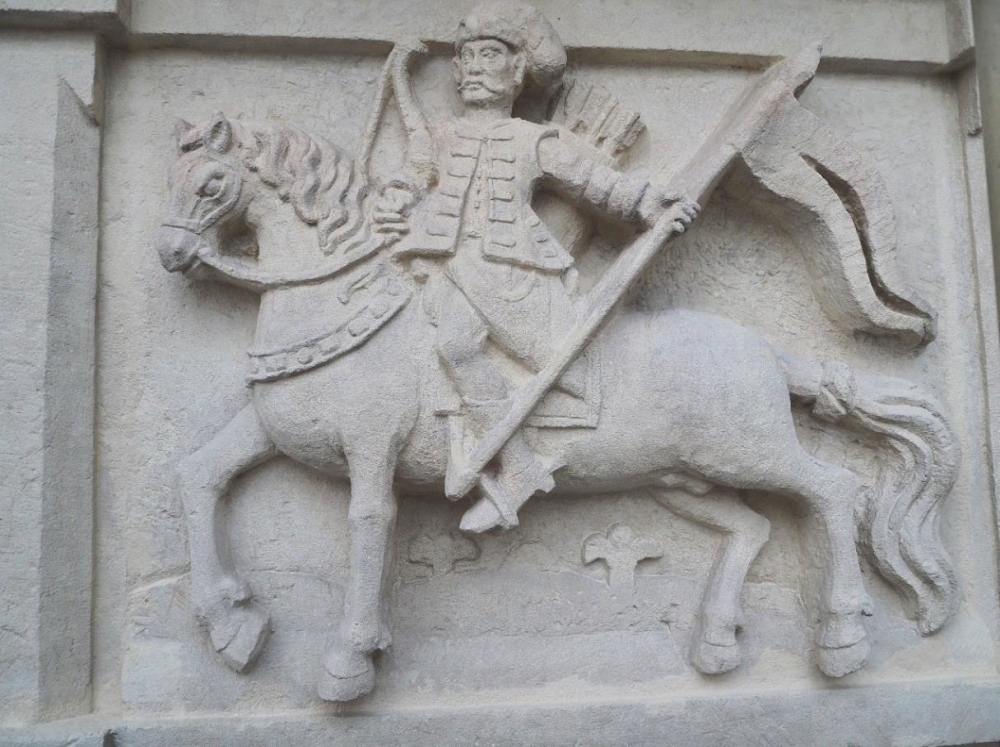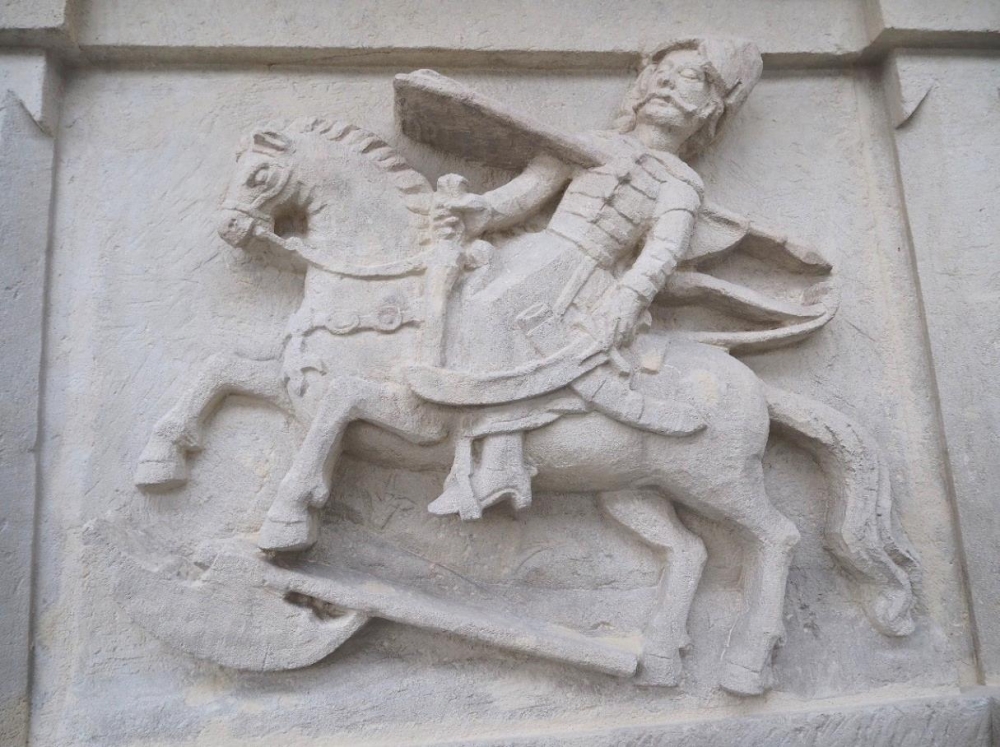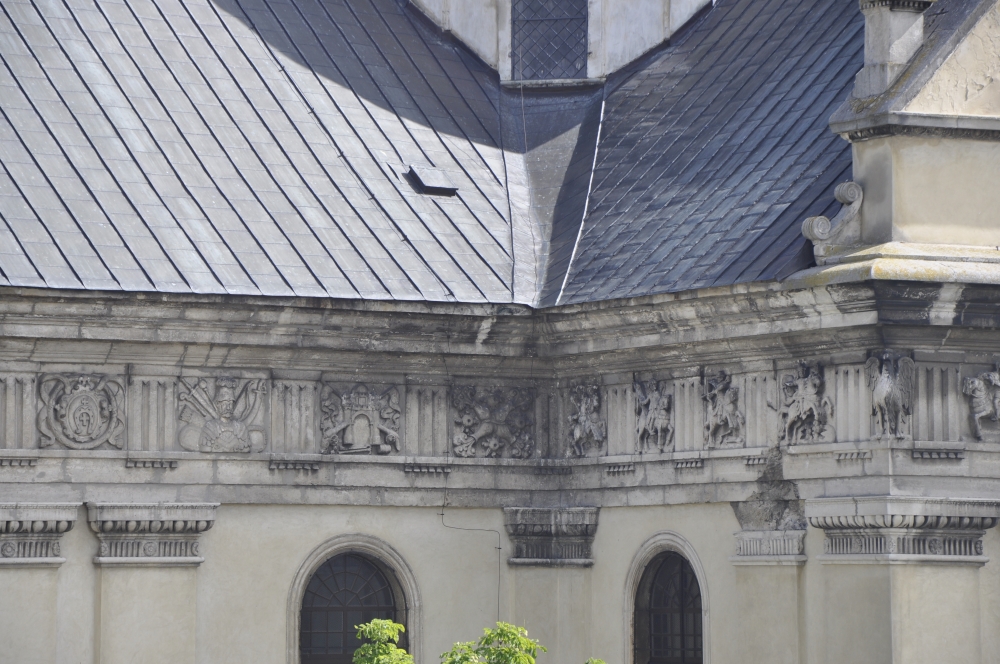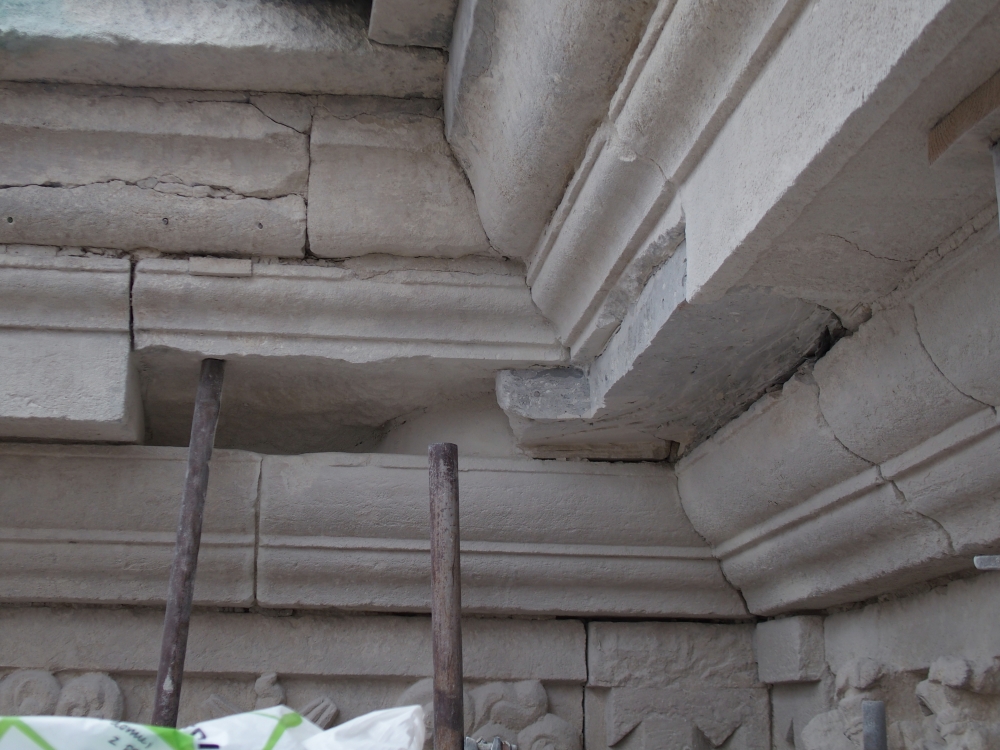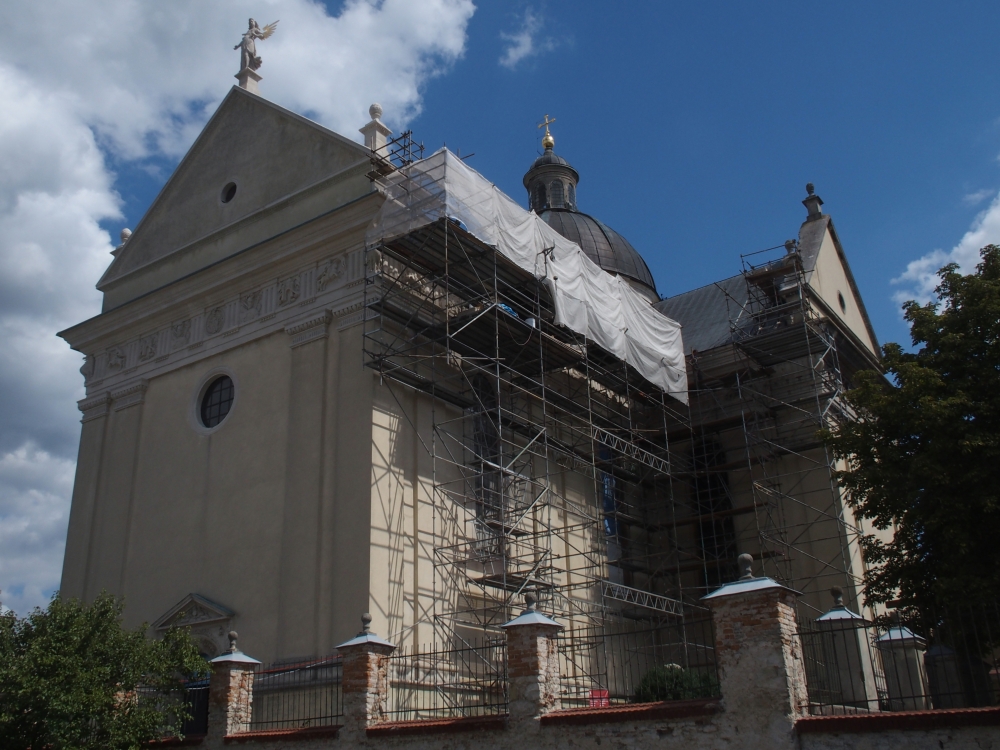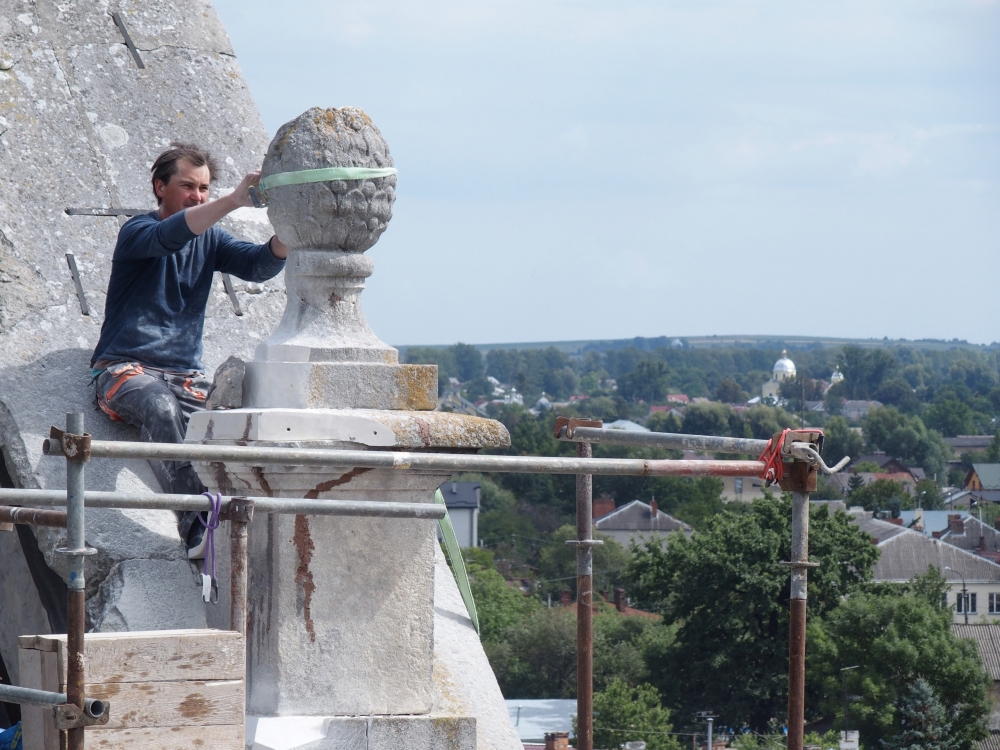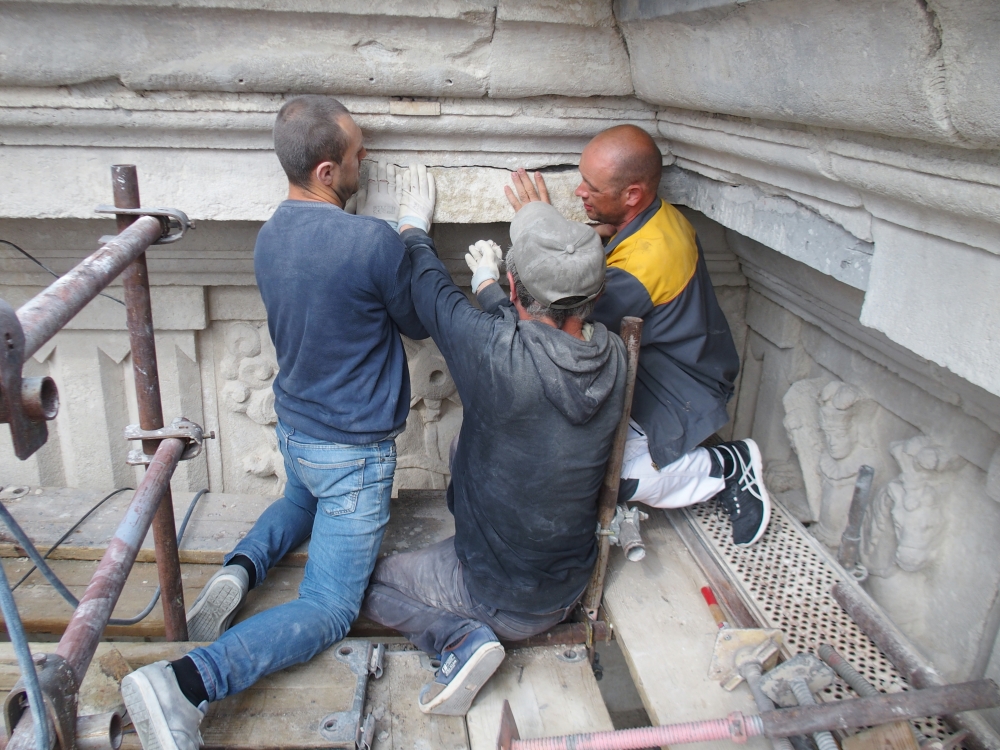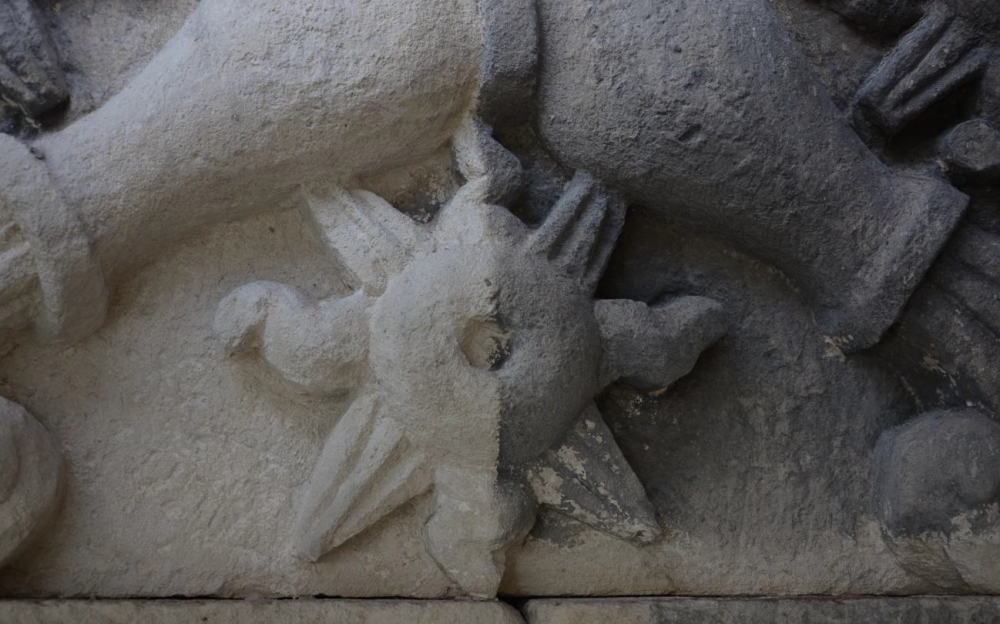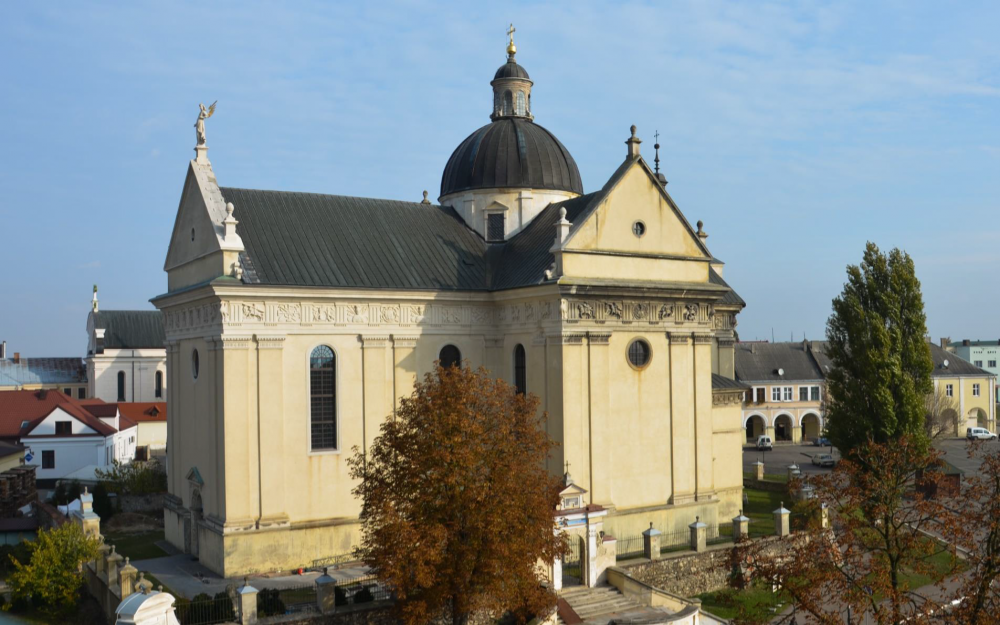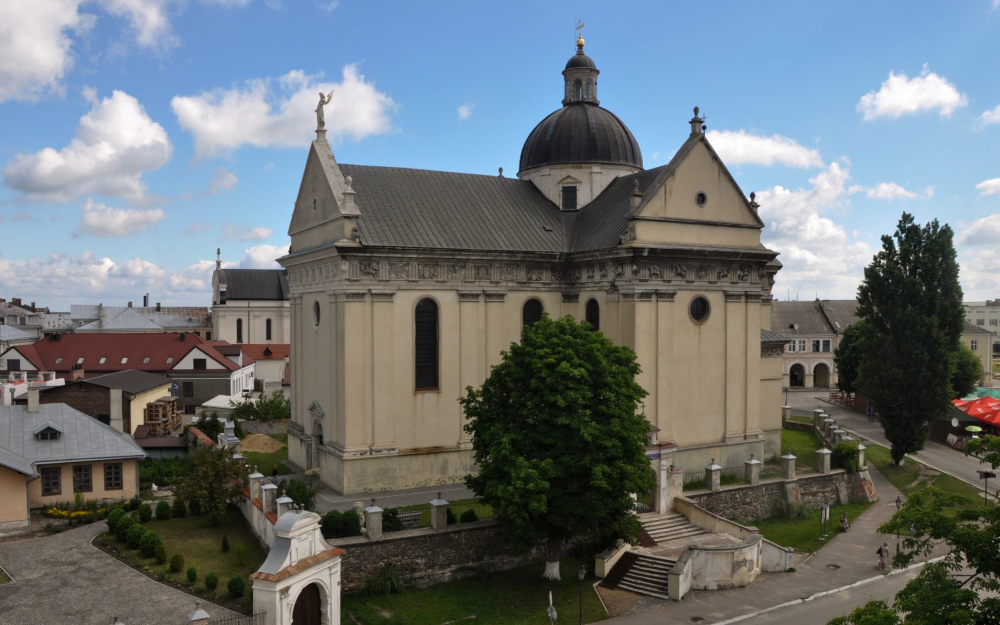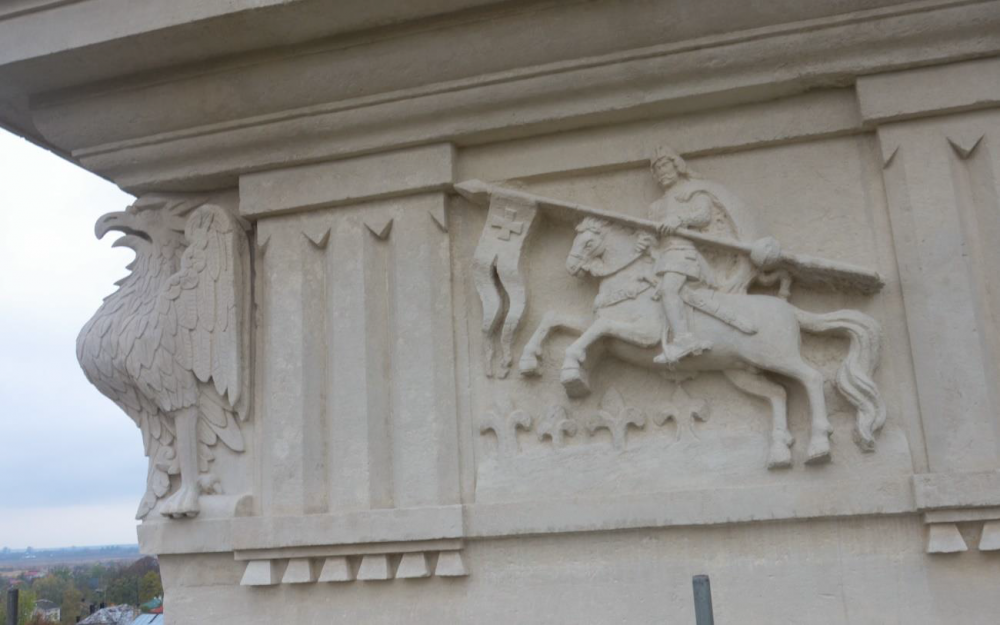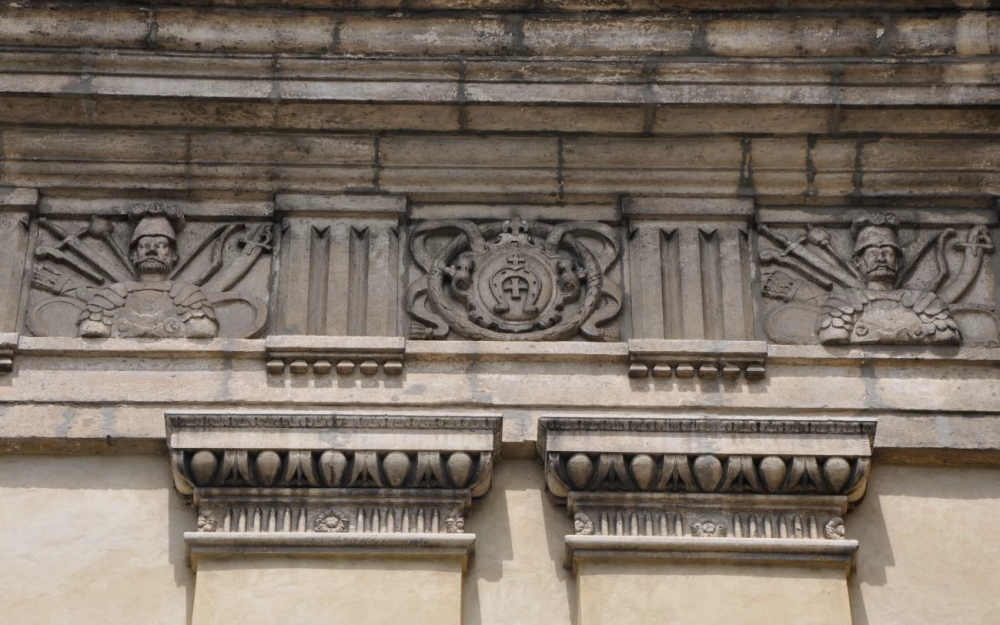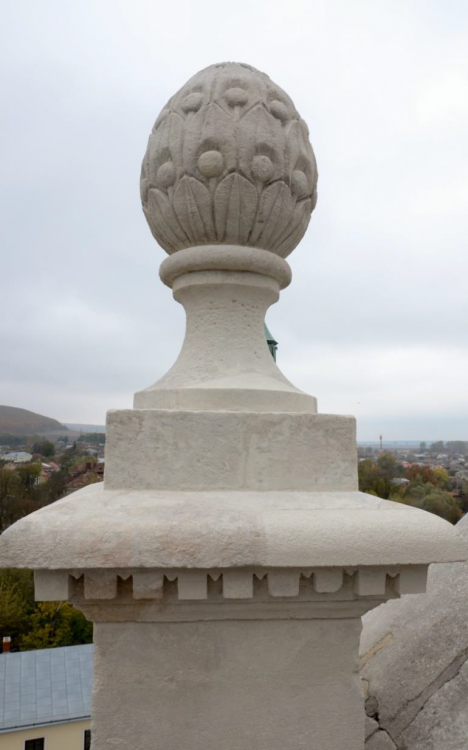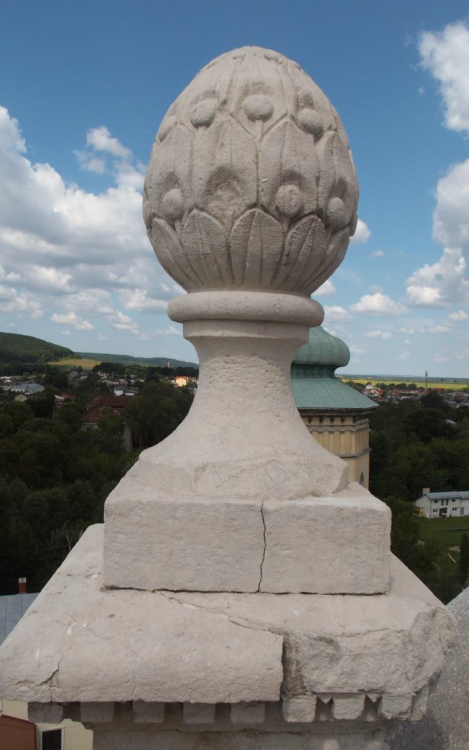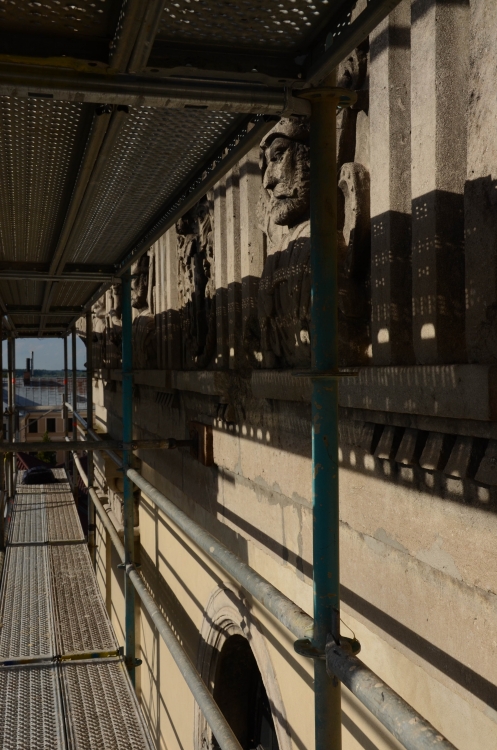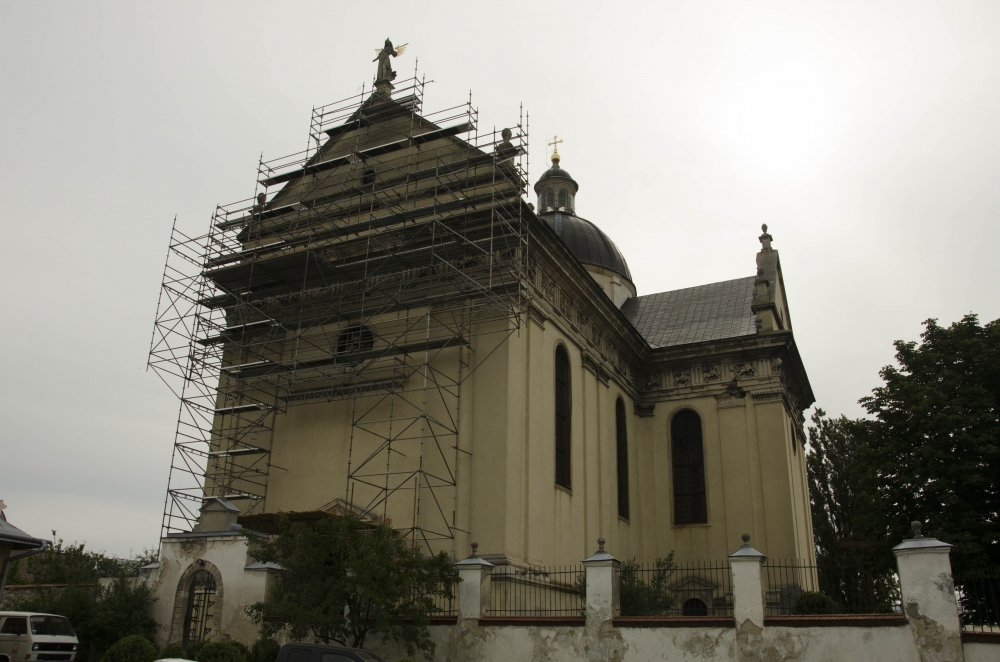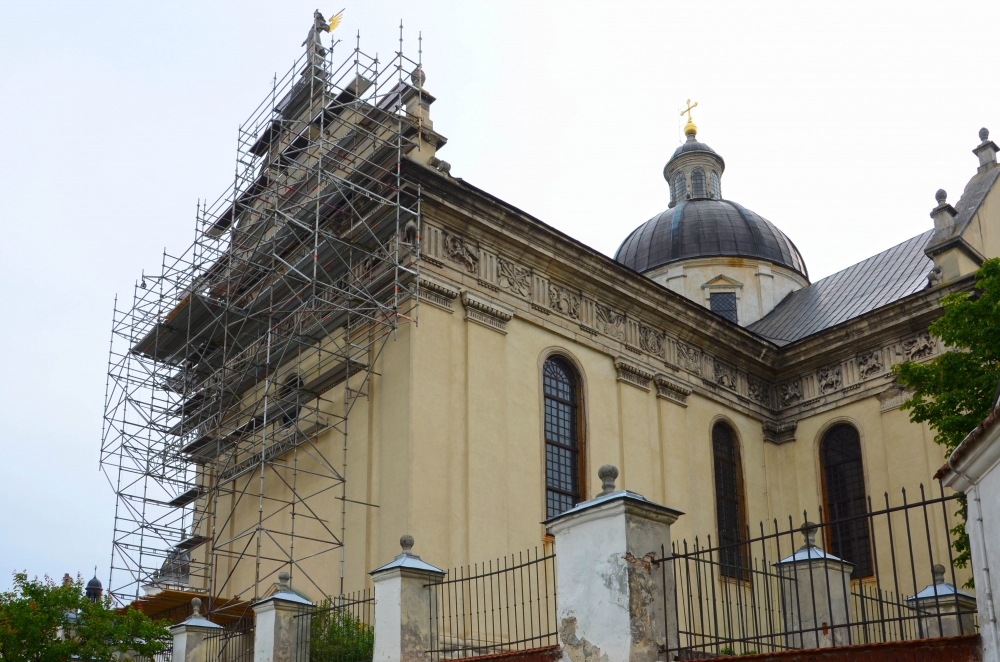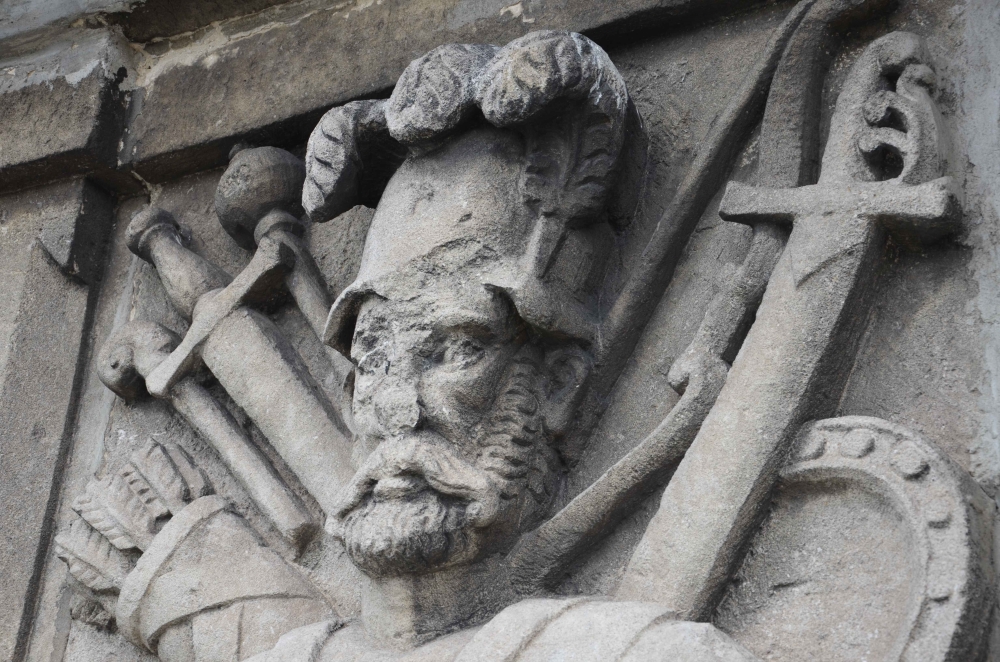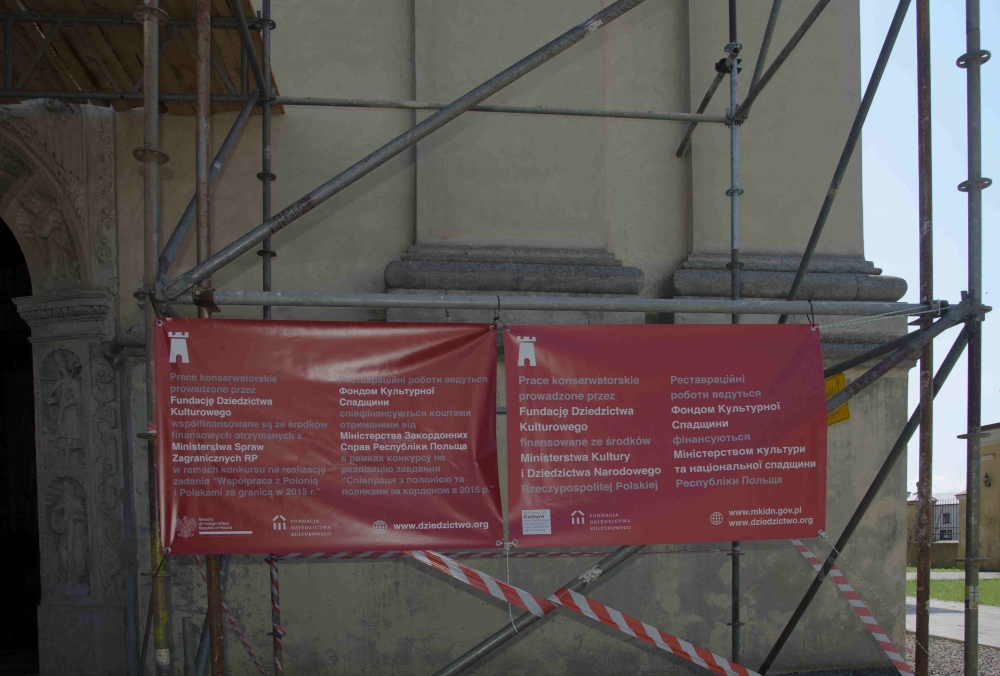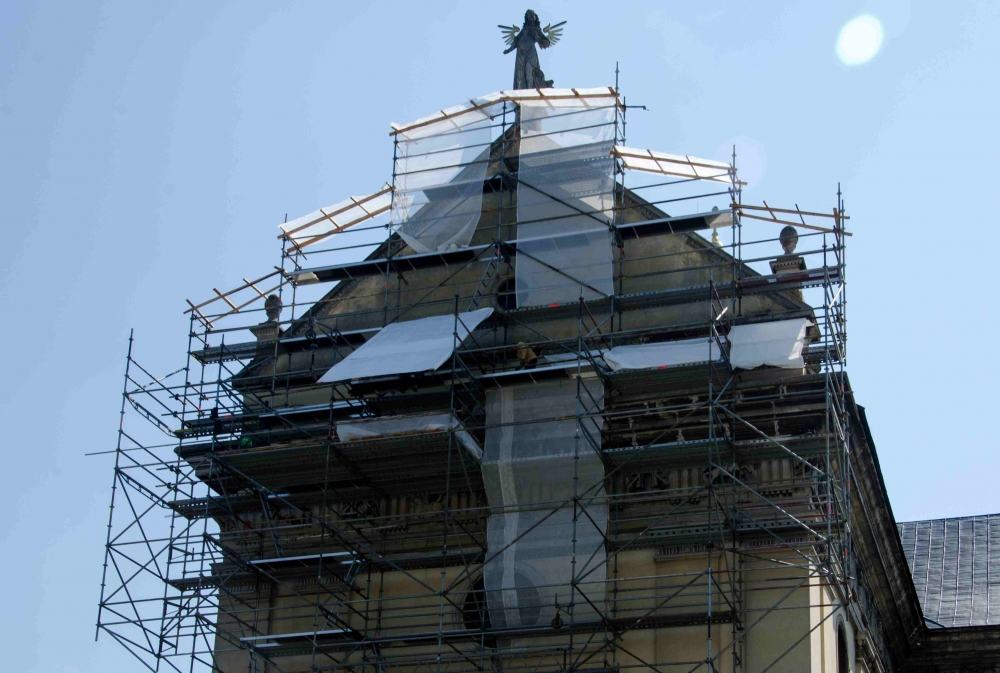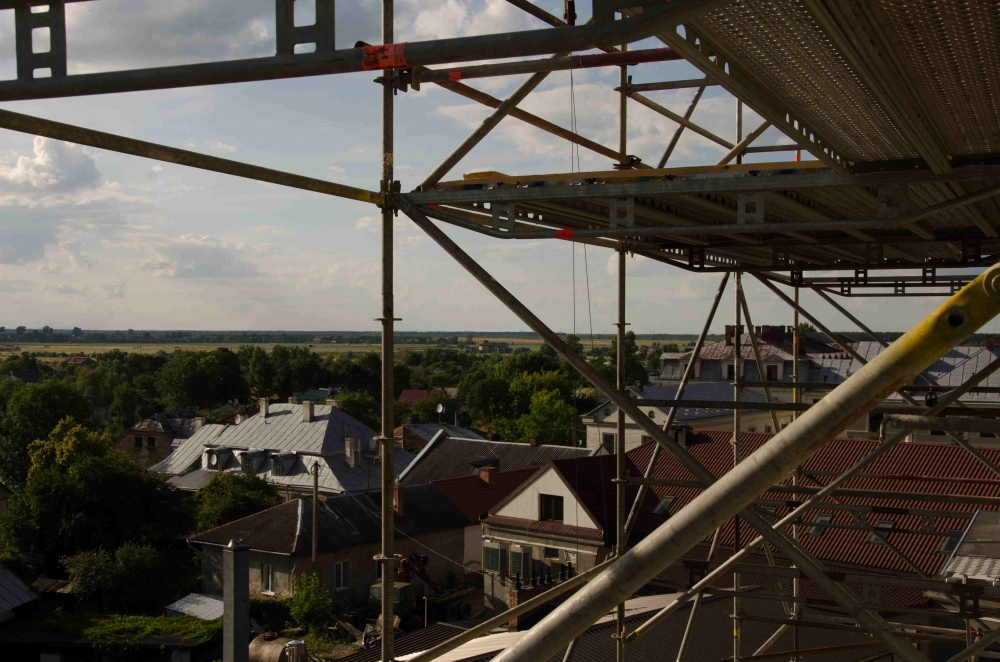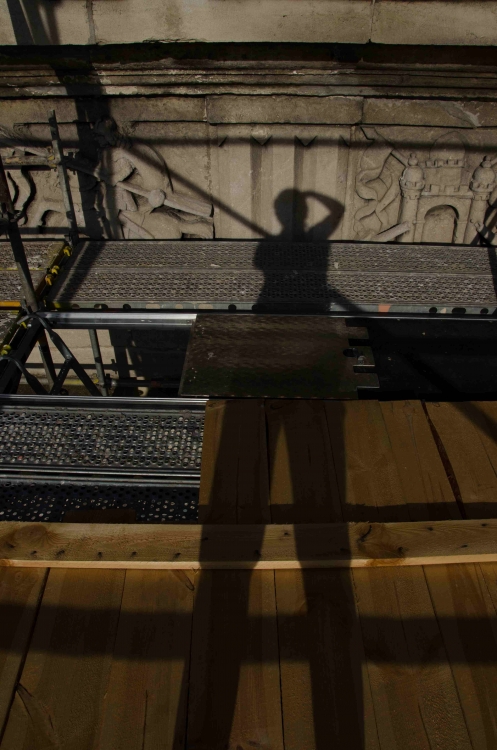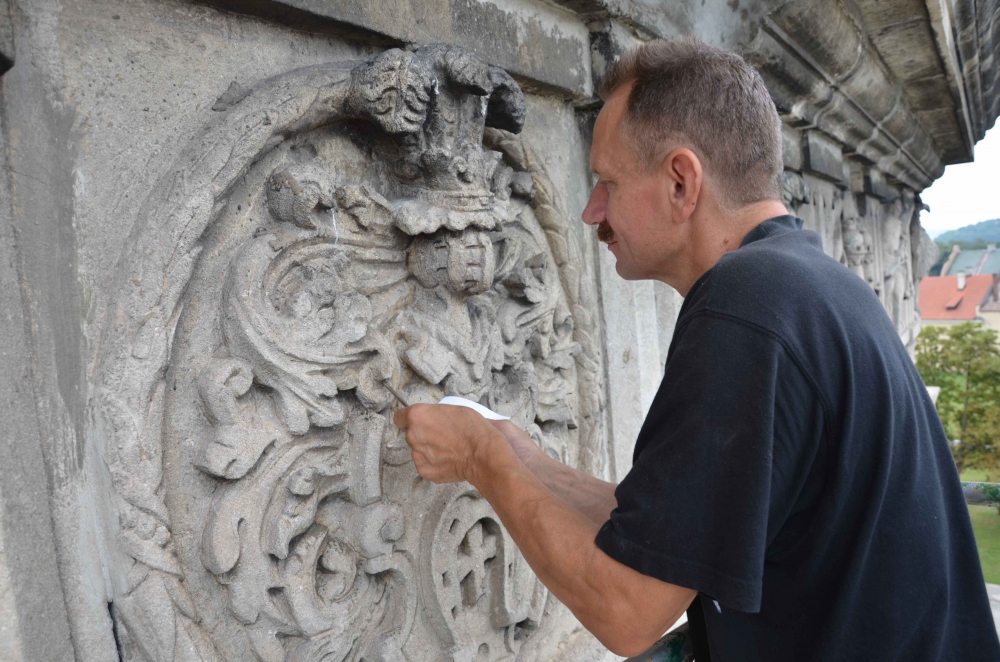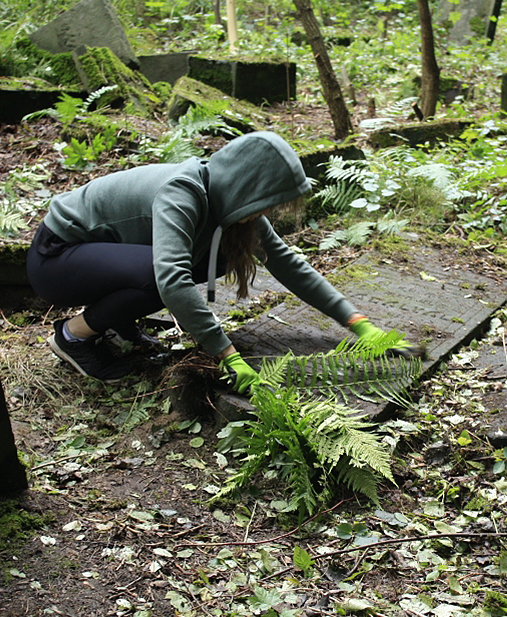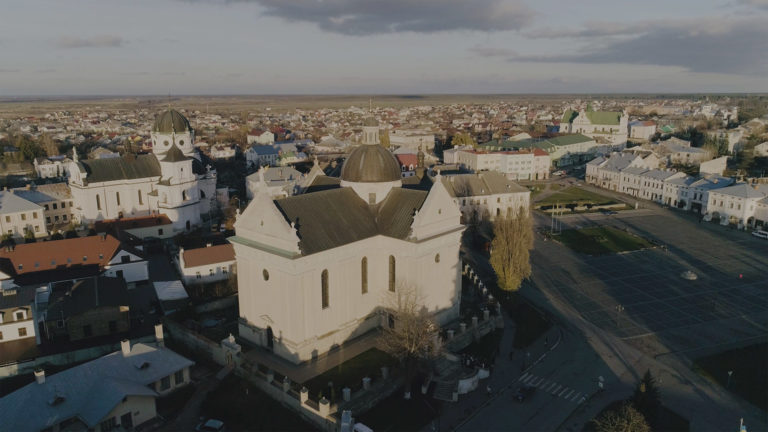o projekcie
The building was constructed in the period 1606-1618 based on a design of Italian architects working in Lviv: Paolo the Lucky and Ambrosius Simonis, quite likely in collaboration with Paolo of Rome. The church was founded by the Polish Grand Crown Hetman Stanisław Żółkiewski, making it the pantheon for himself and his family. This unique piece of architecture didn’t have a counterpart in the territory of the former Polish–Lithuanian Commonwealth. Apart from serving a religious purpose, the church functioned also as a family mausoleum and a votive offering made for the victories of the Polish forces commanded by its founder. The church was especially taken care of by the founder’s grandson, Jan III Sobieski.
The intention was to make the building the Pantheon of Polish Knighthood. The idea is described in Żółkiewski’s programme carved into the surface of a broad frieze stretching around the building from the outer side. It’s a very unusual solution for the standards of the European art of the time.
The metopes of the frieze are ornamented with bas-reliefs featuring e.g. St George and St Martin fighting a dragon, horse-mounted hussars, archers, wounded soldiers, the Lubicz coat of arms, symbolic arrangements made up of gates, panoplies, and plant-like motifs. The corners come with full-figure sculptures of eagles.
Żółkiewski’s manifesto featured in the frieze included originally four large-format battle pieces decorating the interiors of the church. Today, they are a part of the collection kept and displayed at the Lviv National Art Gallery. The first of them, painted around 1620 by Szymon Boguszewicz by order of Hetman Stanisław Żółkiewski, depicts the battle of Klushino. Other paintings: “the Battle of Khotyn” by Andrzej Stech, “the Battle of Vienna” and “the Battle of Parkany” by Martino Altomonte, painted in the period 1693–1695 by order of King Jan III Sobieski. Having the interiors of a church in the Polish–Lithuanian Commonwealth decorated in such a way was something completely innovative and unheard of at the time.
W roku 2019 prace obejmą konserwację kamiennego fryzu od strony północnej i wschodniej północnego transeptu wraz z tympanonem i dwoma oculusami.
Podobnie jak rok wcześniej, prace konserwatorskie prowadził polsko-ukraiński zespół pod kierunkiem Andrzeja Kazberuka i pod nadzorem prof. Janusza Smazy.
Prace będą realizowanie dzięki środkom Ministerstwa Kultury i Dziedzictwa Narodowego przyznanym Fundacji Dziedzictwa Kulturowego w ramach programu „Ochrona dziedzictwa kulturowego za granicą”, dzięki wsparciu Senatu Rzeczypospolitej Polskiej przyznanemu w ramach zlecenia zadań w zakresie opieki nad Polonią i Polakami za granicą w 2019 roku oraz dzięki dofinansowaniu z Instytutu Polonika.
In 2018, the preservation of the frieze of the Collegiate Church of St Lawrence involved conservation and restoration of sculptures outside the church, from the south-east and north-west parts of the chancel. Apart from the surface of the frieze, four windows, the oculus, the dormer, and a part of the tholobate were restored too.
Like in the previous year, the conservation works were carried out by a Polish-Ukrainian team managed by Andrzej Kazberuk and supervised by Prof. Janusz Smaza.
The project was carried out thanks to the funding provided to the Cultural Heritage Foundation by the Ministry of Culture and National Heritage as part of “Protection of Cultural Heritage Abroad” programme and thanks to the support of the Senate of the Republic of Poland granted as part of an order for supporting the Polish Diaspora and Poles abroad in 2018. It was also supported financially by the National Institute of Polish Cultural Heritage Abroad.
In 2017, the conservation works focused on the south fragment of the frieze – including the tympanum and oculus.
The works were carried out by a Polish-Ukrainian team managed by Andrzej Kazberuk. The task was supervised by Prof. Janusz Smaza.
The project was carried out thanks to the funding provided to the Cultural Heritage Foundation by the Ministry of Culture and National Heritage as part of “Protection of Cultural Heritage Abroad” programme and thanks to the support of the Senate of the Republic of Poland granted as part of an order for supporting the Polish Diaspora and Poles abroad in 2017.
In 2016, the second stage of preserving the frieze involved restoring the ornamentation on the west wall of the south arm of the transept and the decorative elements running along the south wall of the central nave. The framing of the central nave was restored as well.
The task was carried out by a conservation team managed by Andrzej Kazberuk, composed of: Anna Duda-Maczuga, Anika Agnieszka Józefowicz, Paulina Pytlak, Myhajło Ftoma, Roman Kubajm, Jurij Krywokulskyj, Wsewolod Tomaszewski, Julia Puzhak.
The performed works were financed from the resources granted by the Minister of Culture and National Heritage as part of the “Cultural Heritage” programme, priority: “Protection of Cultural Heritage Abroad”, and from the Senate of the Republic of Poland’s funds provided as part of the competition entitled “Cooperation with Polish Diaspora and Poles Abroad in 2016”.
The project was also supported by Xervon Polska sp. z o.o. from Piaseczno and Termokor Kaefer sp. z o.o. from Rogowiec, who provided the foundation with several dozen tonnes of scaffolding required to carry out the planned works.
Projekt wsparły również firmy Xervon Polska Sp. z o.o. z Piaseczna oraz Termokor Kaefer Sp. z o.o. z Rogowca, które przekazały na rzecz Fundacji kilkanaście ton rusztowań niezbędnych do przeprowadzenia prac.
In 2015, the Cultural Heritage Foundation completed the first stage of conservation of the historic frieze.
The project was financed from the Ministry of Culture and National Heritage’s funds granted as part of the “Cultural Heritage” programme, priority: “Protection of Cultural Heritage Abroad”, and from the Ministry of Foreign Affairs’ resources provided as part of the programme entitled “Cooperation with Polish Diaspora and Poles Abroad in 2015”.
In 2015, the foundation was supported in its efforts to conserve the Collegiate Church of St Lawrence in Zhovkva by students of faculties of conservation and restoration of works of art from Warsaw, Kraków, and Toruń. As part of the pursued internship programme, the young apprentices of the art of conservation helped in renovating the historic frieze on the façade of the church.
Special words of gratitude go to our donors, who provided us with 3.5 tonnes of scaffolding, making it possible for those engaged in renovating the church to access the said frieze.
